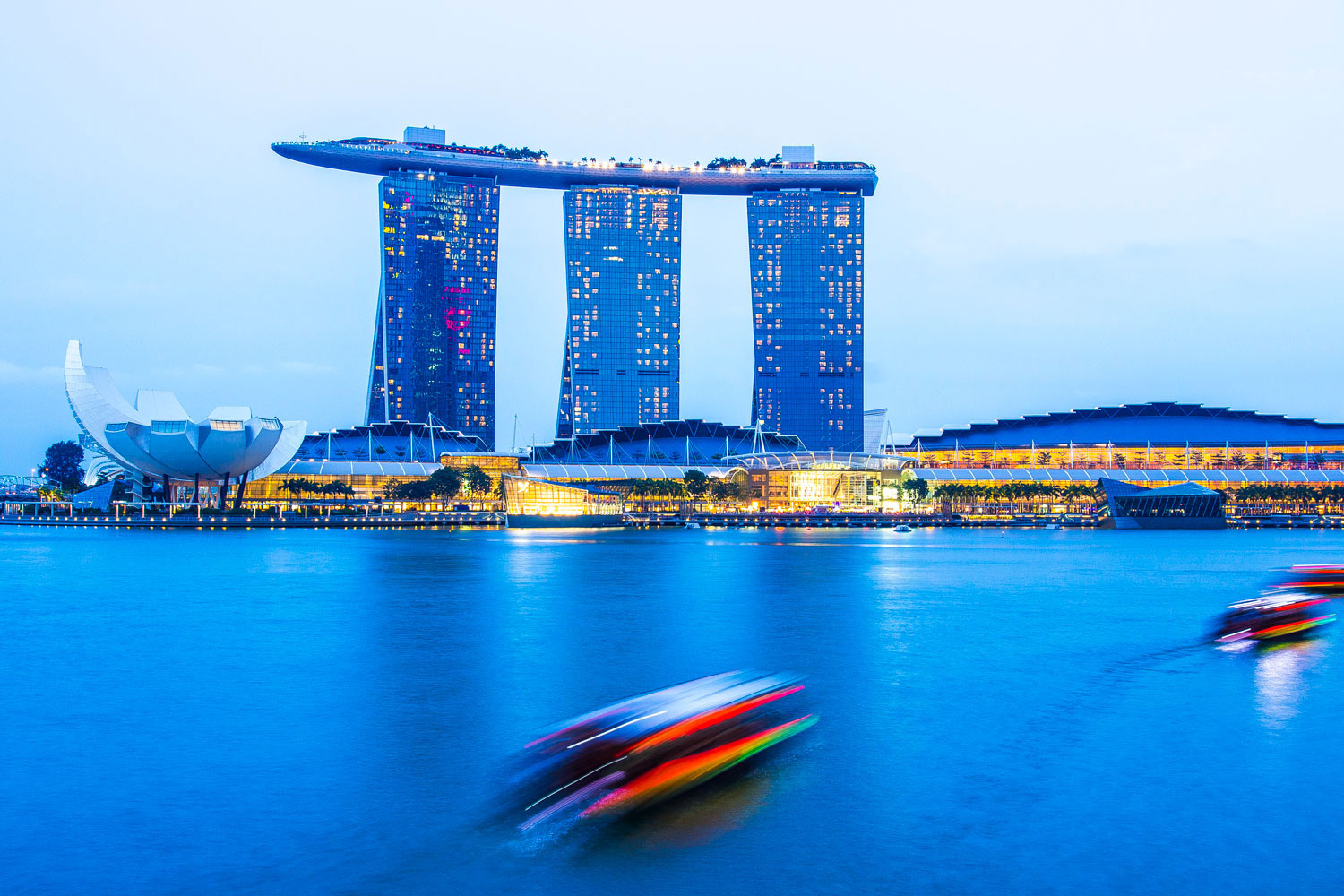Singapore. Part two. Skyscrapers
Brief historical overview.
Singapore is a microstate entirely consisting of the city of Singapore. It is a small piece of land located on the tip of the Indochinese Peninsula, sandwiched between Malaysia and the sea.
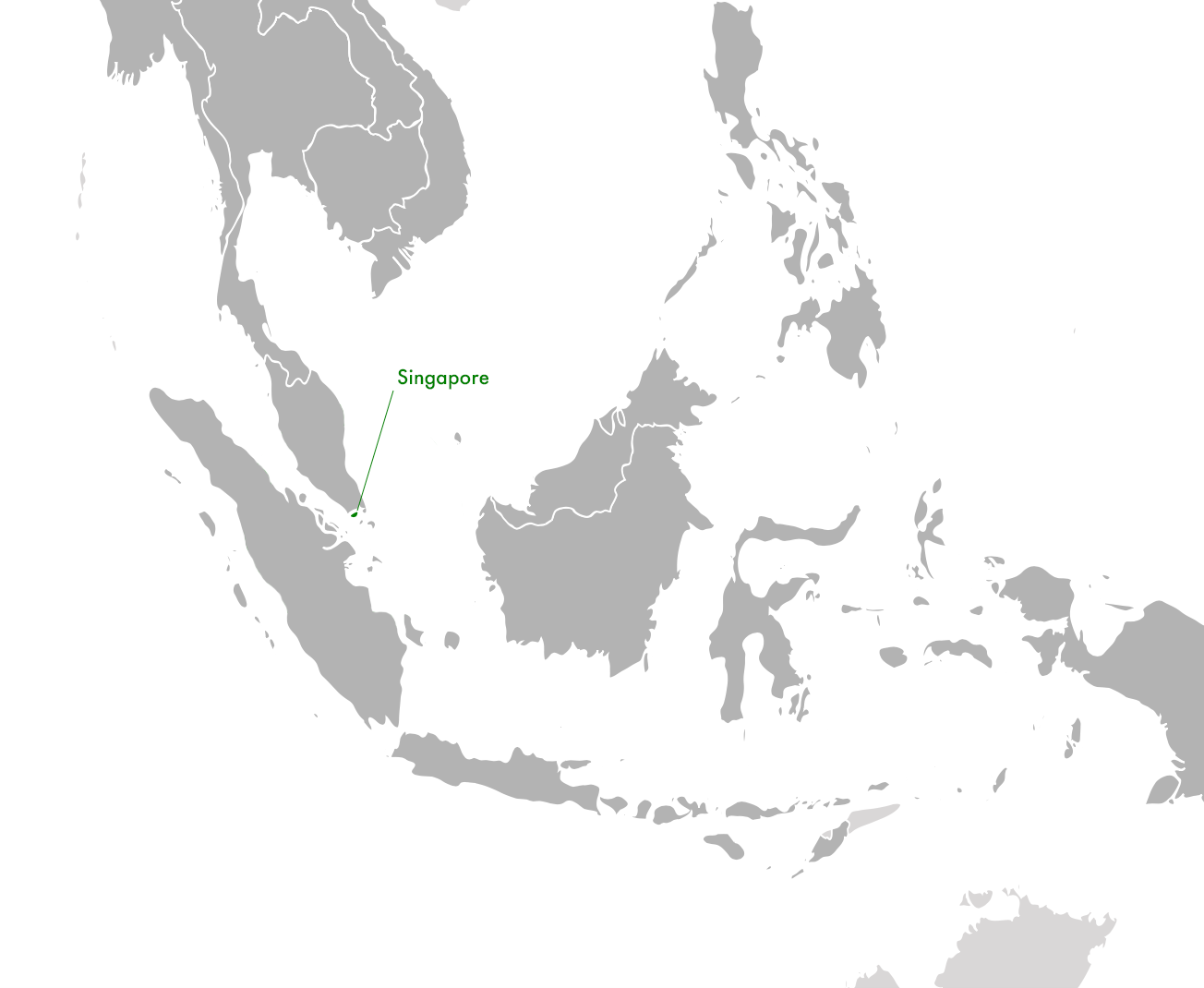
And what could such a country really achieve? It has no territory to speak of. There is nowhere to grow crops. In the event of an enemy attack, there is nowhere to retreat. There are absolutely no resources, they even import fresh water from Malaysia.
What to do in such a situation? In general, either surrender or build communism. But Singaporeans were extremely lucky. They were lucky like no one else: Lee Kuan Yew emerged in Singapore.
Singapore is a story about whether it is possible to create a developed economy in a country through repressive methods. The thing is, it is theoretically possible if the leader of the country possesses truly unprecedented qualities, but the chances of this happening are monstrously small that it is better not to hope for such a scenario and not to wait for a legendary leader who will single-handedly lead the nation towards prosperity. But if such a chance does arise...
Lee Kuan Yew turned out to be precisely that unique individual who forcefully imposed prosperity upon Singapore. The exorbitant fines and explicitly peculiar laws that remain in effect in the country to this day, along with Lee Kuan Yew’s most famous quote, leave no doubt that he was an exceptionally strict leader.
With one caveat. Lee Kuan Yew was also an exceptionally competent prime minister. It is pointless to compare him to Stalin, Mao, Castro, and lament that “others were not so lucky.” Those revolutionary half-wits were nowhere near his level.
Firstly, Lee Kuan Yew was well-educated. He initially graduated from the prestigious Raffles College in Singapore. Then he attended the London School of Economics. After that, he went on to Cambridge, earning two First Class Honours degrees: one in Law and another in Economics.
Secondly, Lee Kuan Yew was not just another idiot leading the country on his “own path.” The British colony left Singapore with its legal system, English language, and economic foundation. While other leaders of former colonies were breaking down this foundation, Lee Kuan Yew simply took it and adapted the British system for an Asian country.
Thirdly, Lee Kuan Yew was a fierce opponent of communism. It could not have been otherwise for an economist by education.
So here is the answer to the nagging question at hand: yes, prosperity can be forcefully imposed. If one has the wisdom to understand that what needs to be imposed is a free economy, not Marxism.
⁂
Singapore is divine.
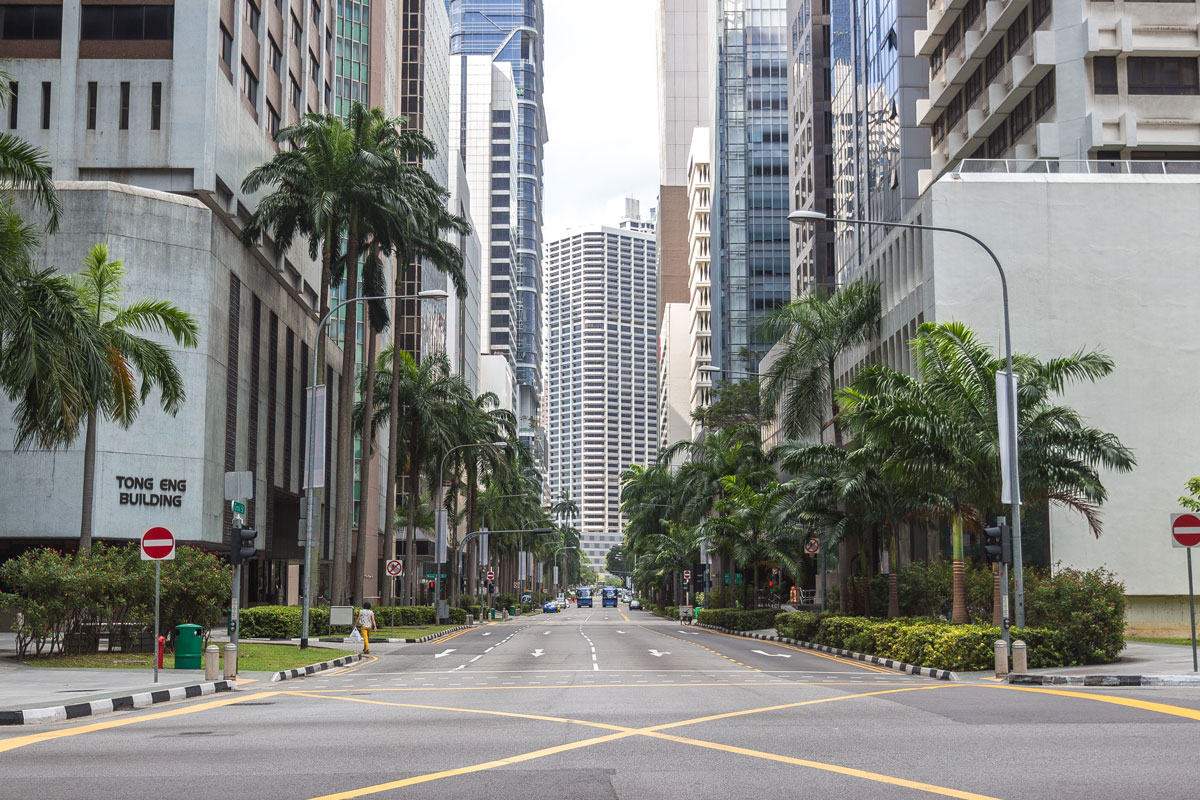
Singapore is the greenest city among skyscraper cities.
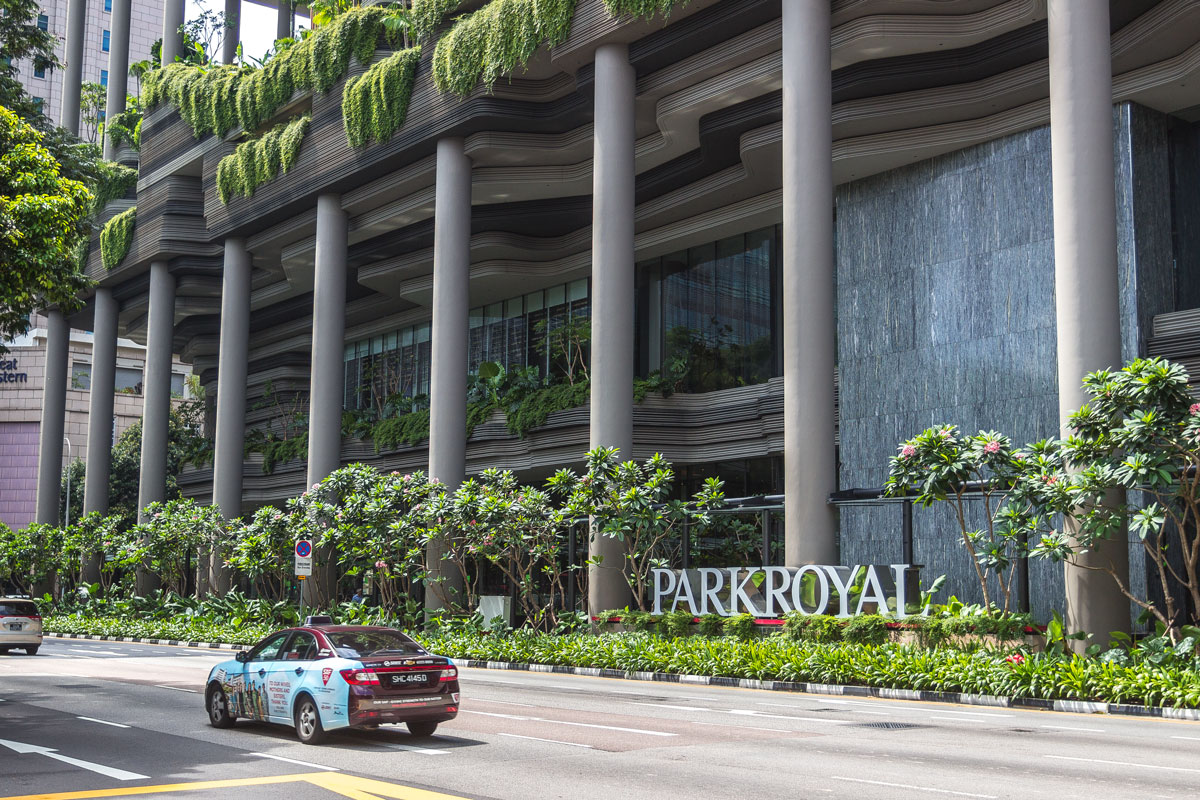
Singapore is simply astounding and awe-inspiring.
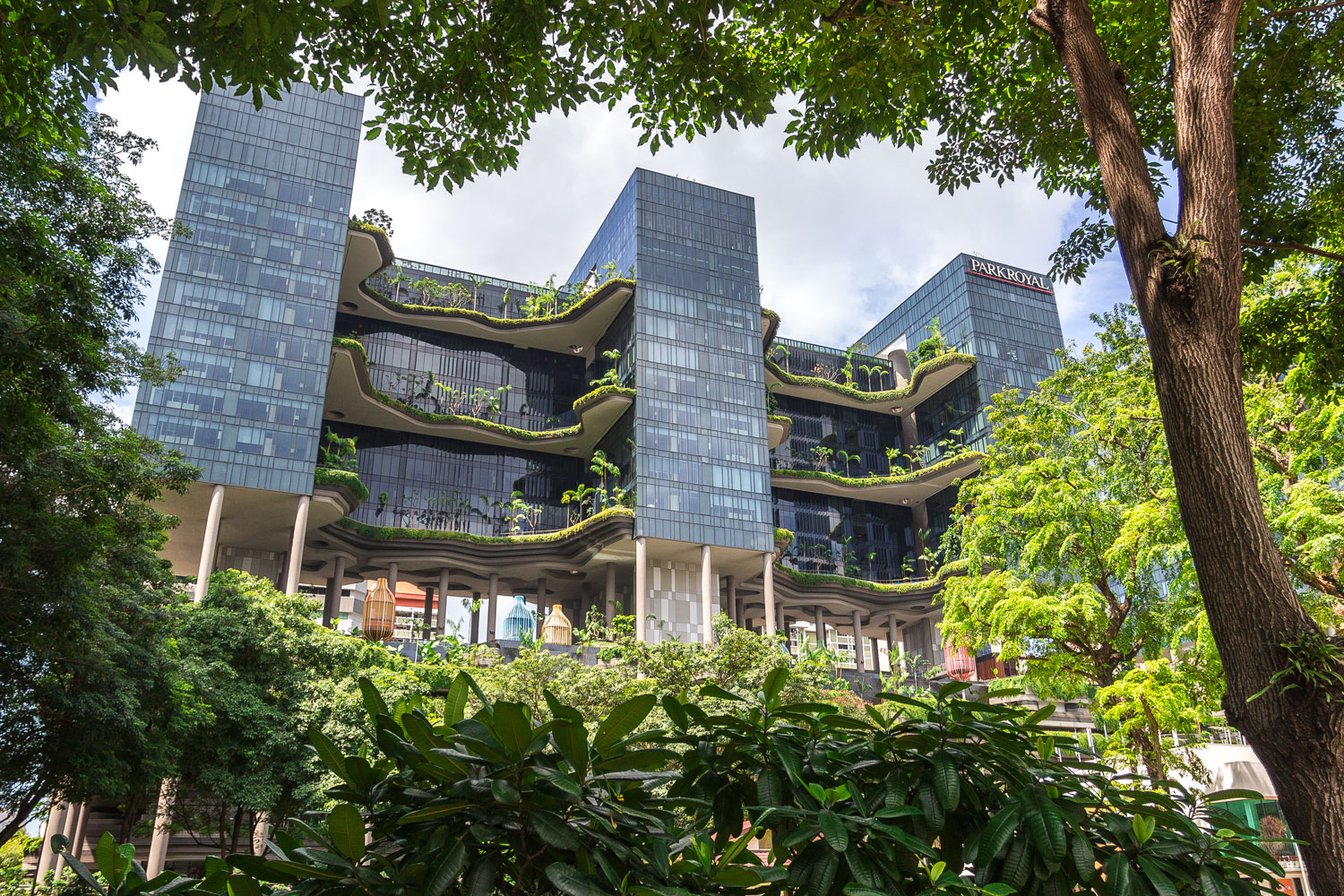
There is nothing like it anywhere else in the world. The city is simply immersed in greenery. Vertical greening has fully blossomed in Singapore. This building is just a hotel in the city center, and there are many such buildings here.
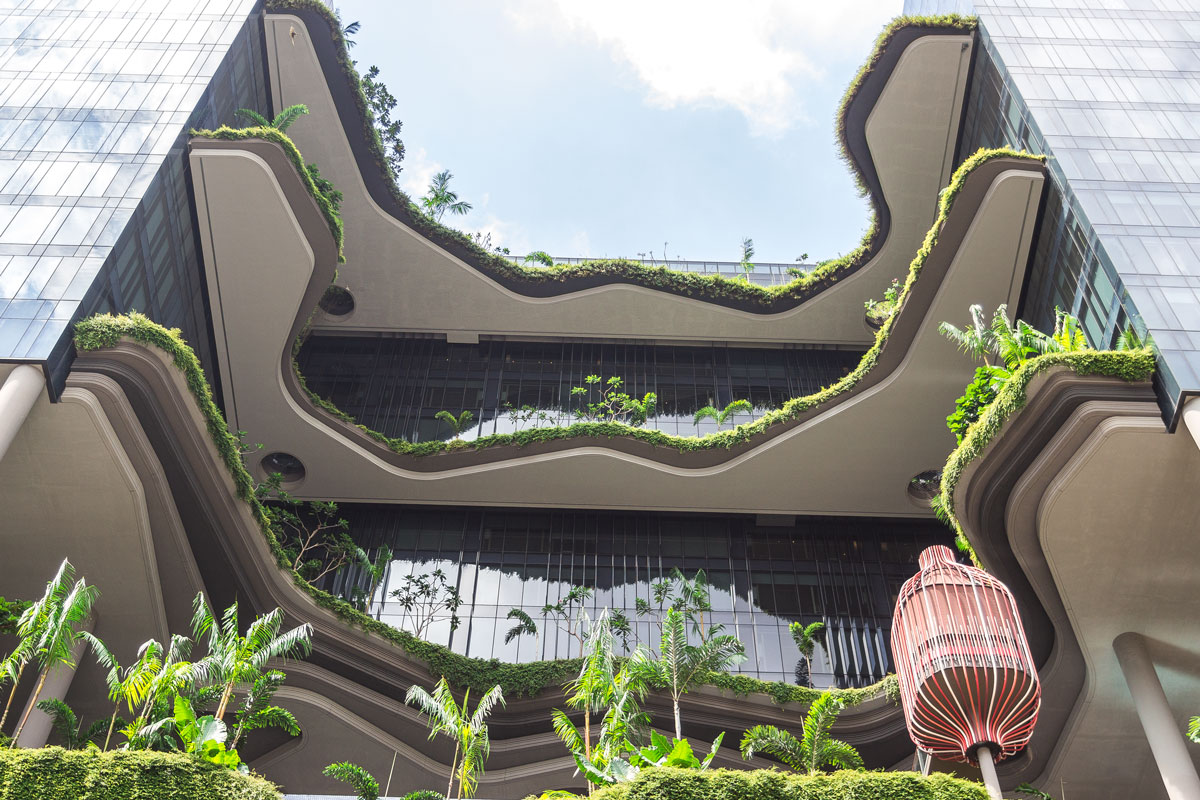
Forests literally grow on skyscrapers.

Underneath the skyscrapers as well. Trees, fountains.
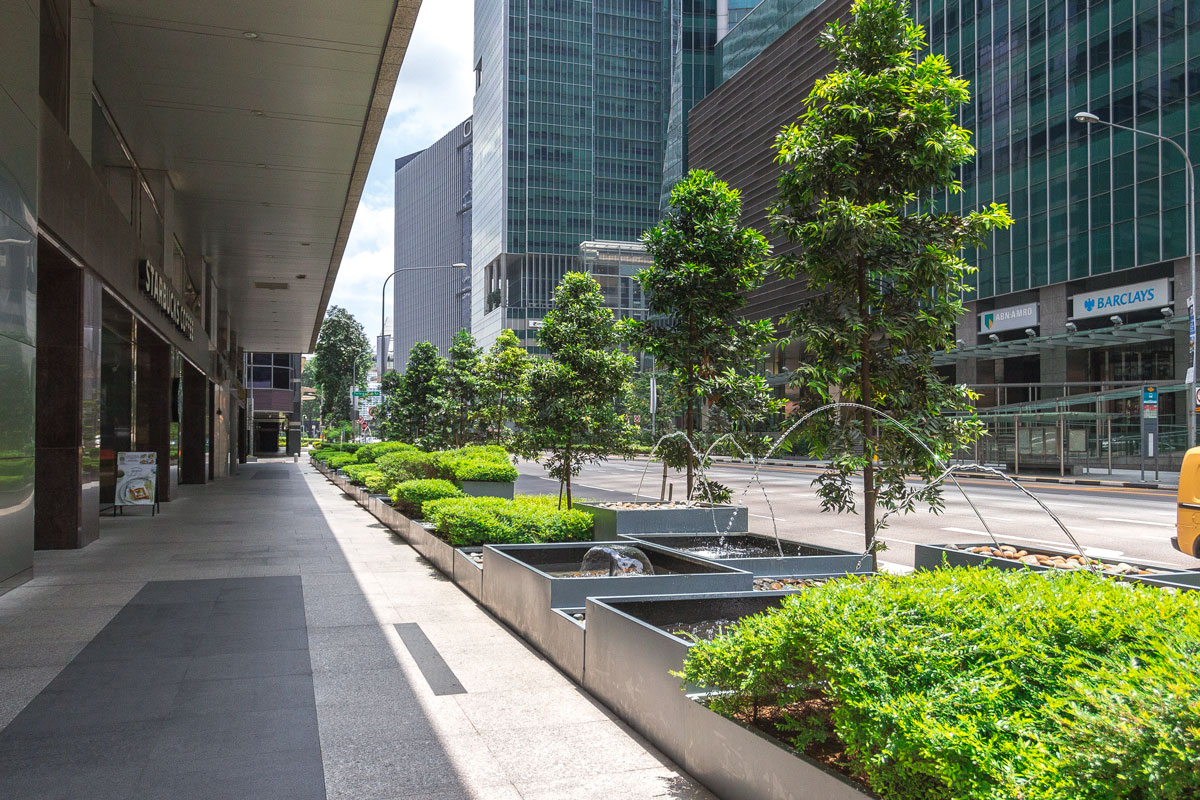

Stone jungles grow from real jungles.
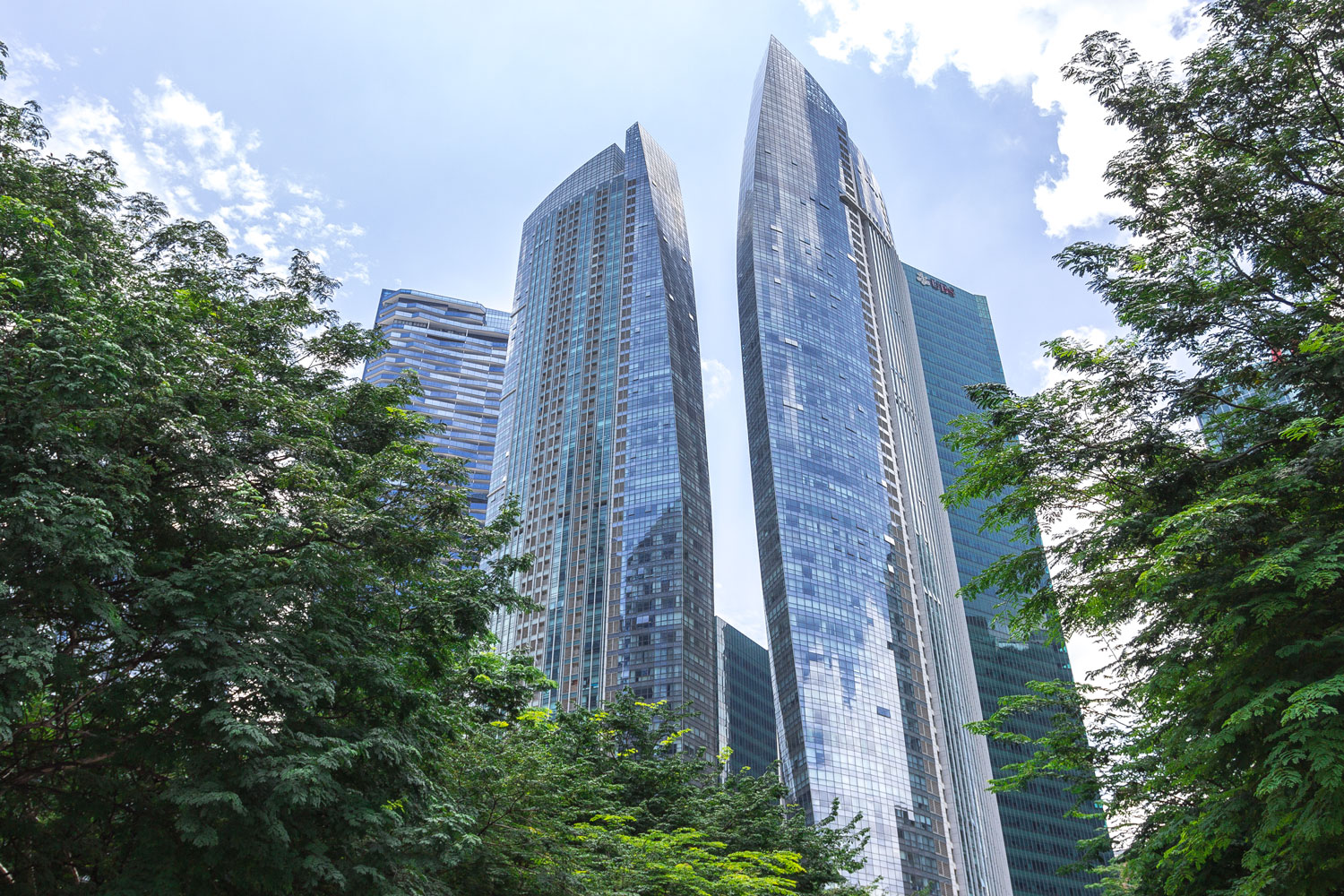
The reader might think it’s some kind of garden on the street, but it’s simply the roof of a major mall at the Marina Bay Sands hotel.
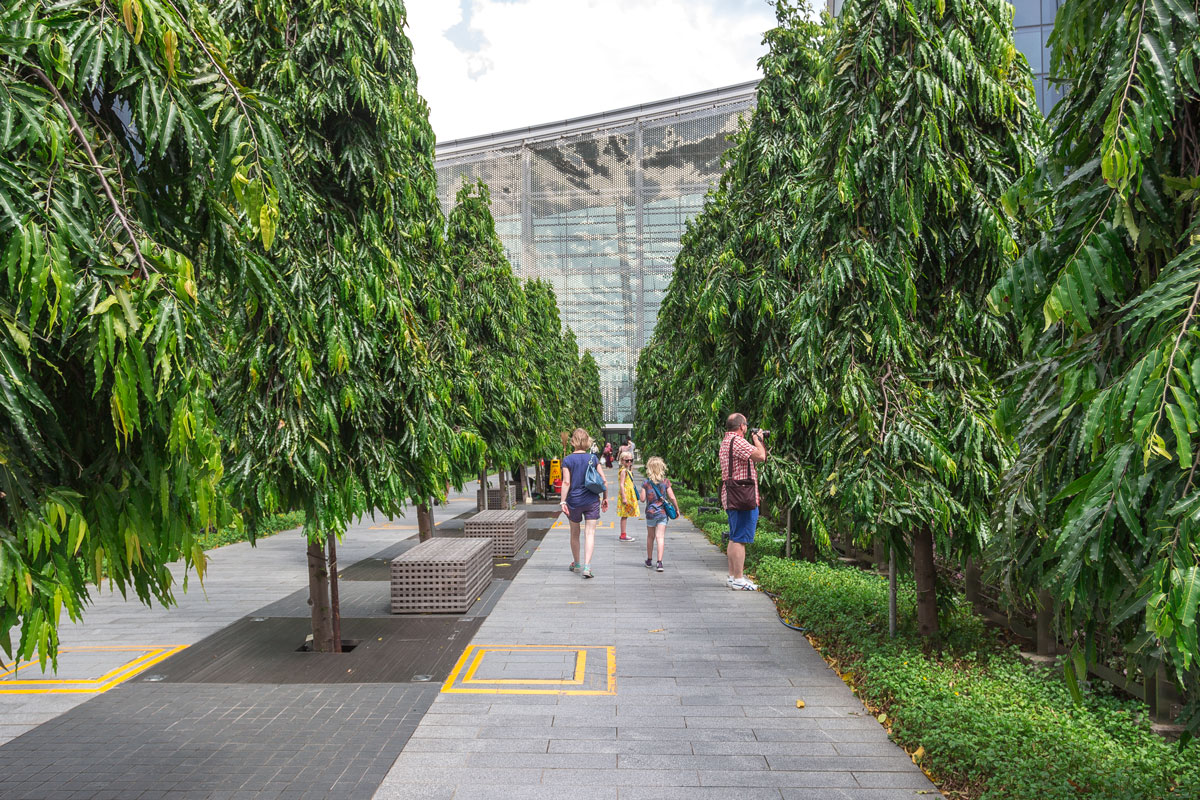
Marina Bay Sands hotel is the focal point of Singapore, a massive ship-shaped hotel skyscraper. It can be seen from many kilometers away in the city.
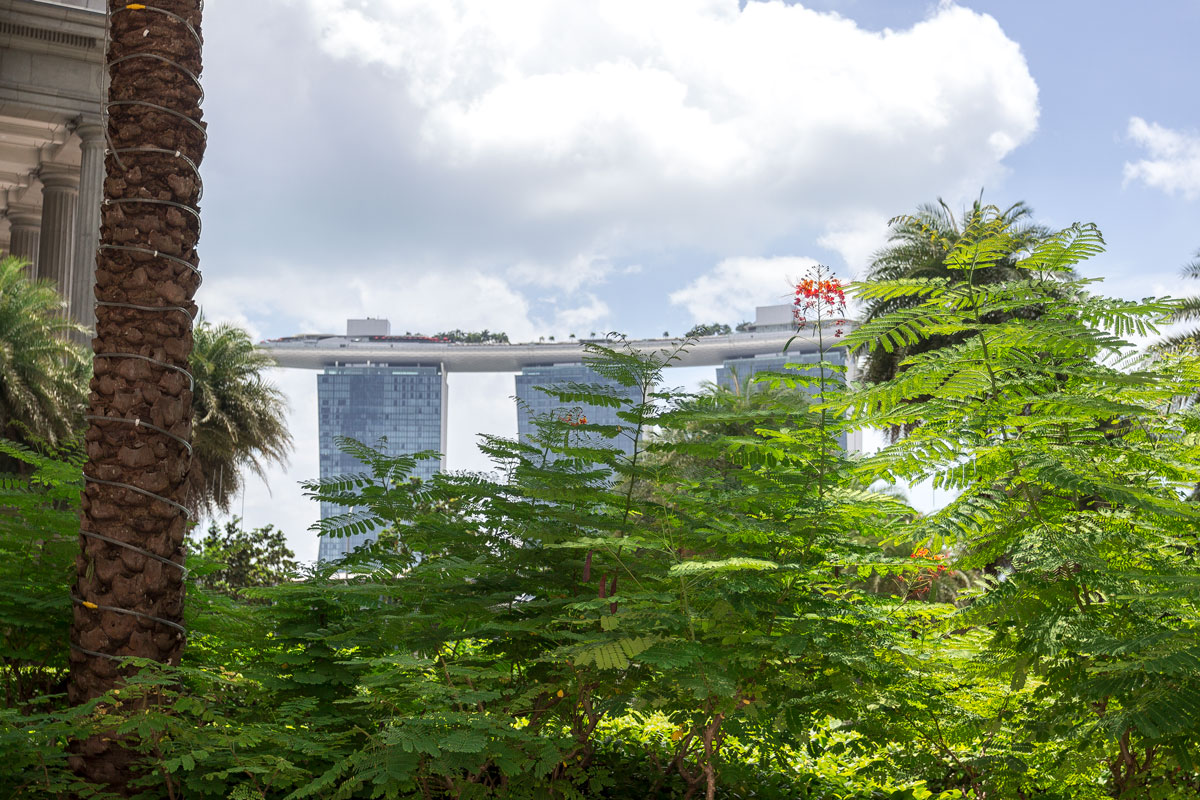
A colossal structure. In front of the hotel lies the artificially created Marina Bay.

It is best to stroll here in the evening and at night.
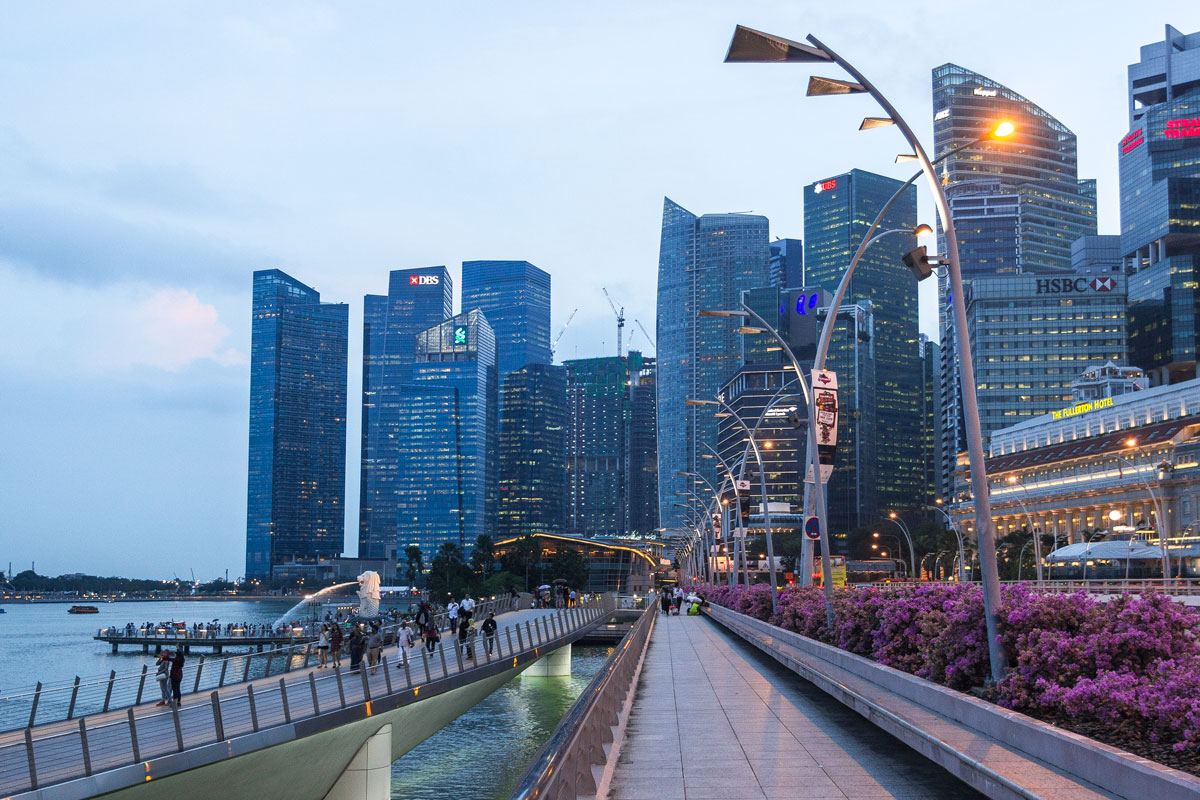
That’s when the lights come on at the Esplanade — Theatres on the Bay. The building’s unique design, resembling the durian fruit, is another example of stunning modern architecture. Durian is a notoriously pungent but delicious fruit that is highly popular in Singapore and Malaysia.
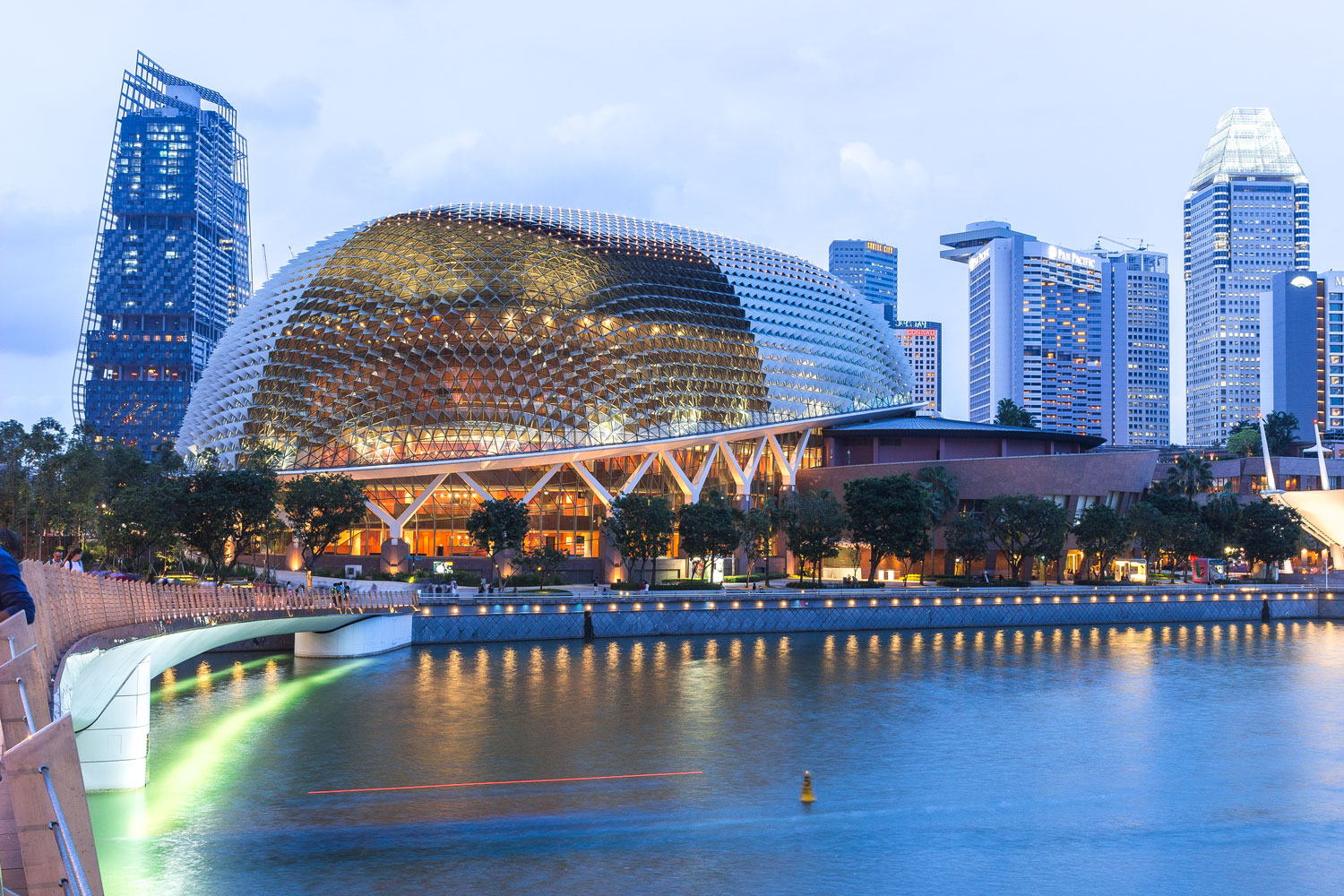
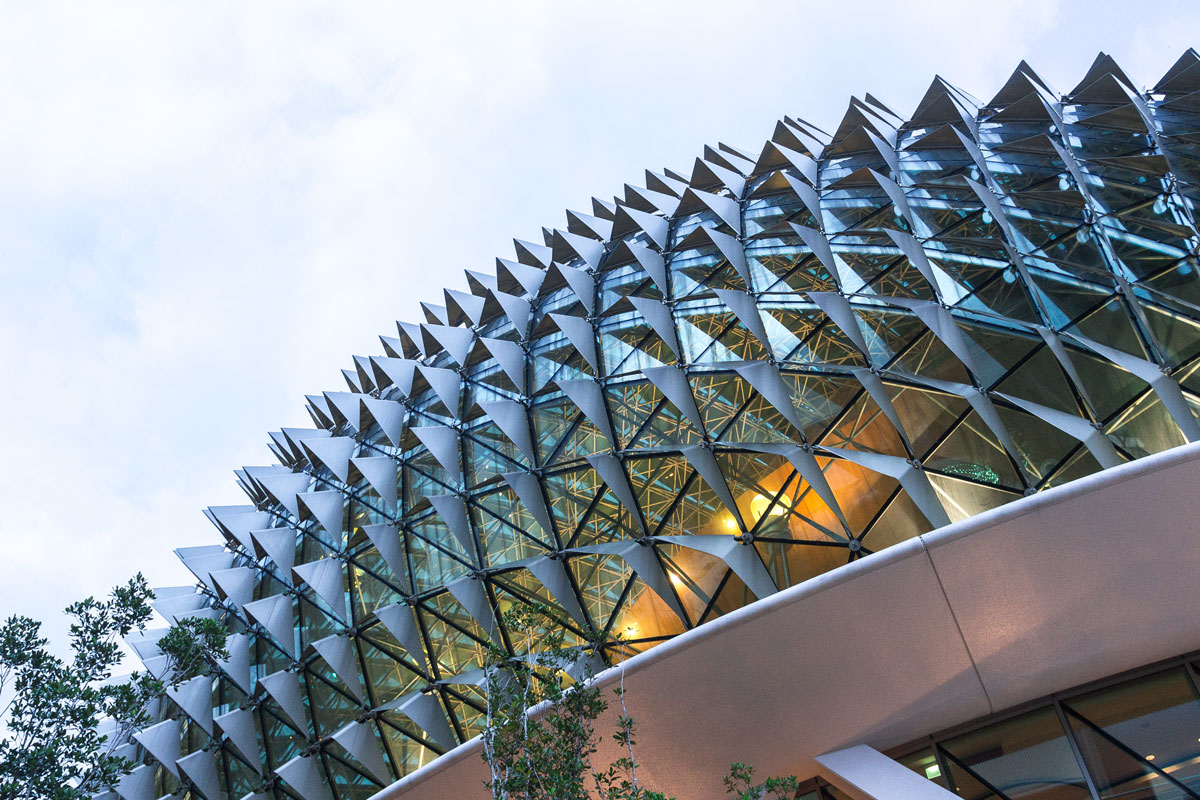
At the pier, the Merlion fountain starts spouting water — the symbol of Singapore, a lion with a fish tail.
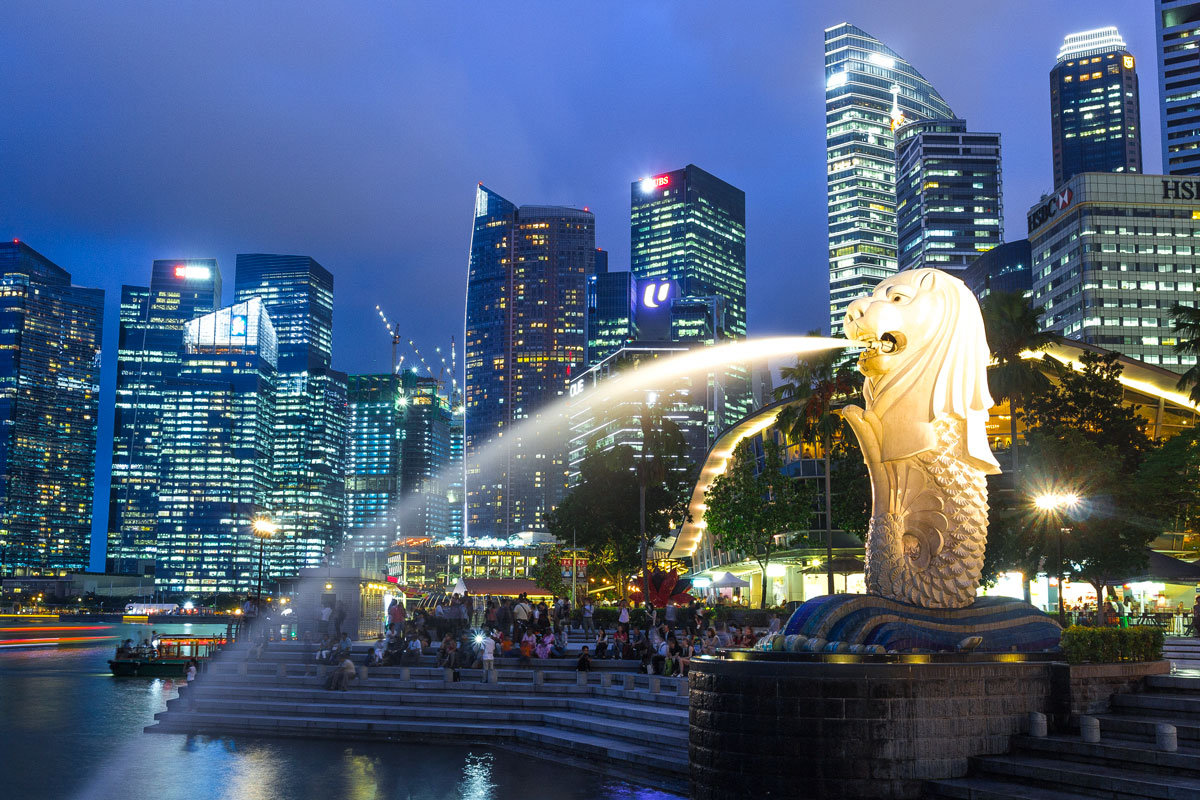
The skyscrapers light up as well.
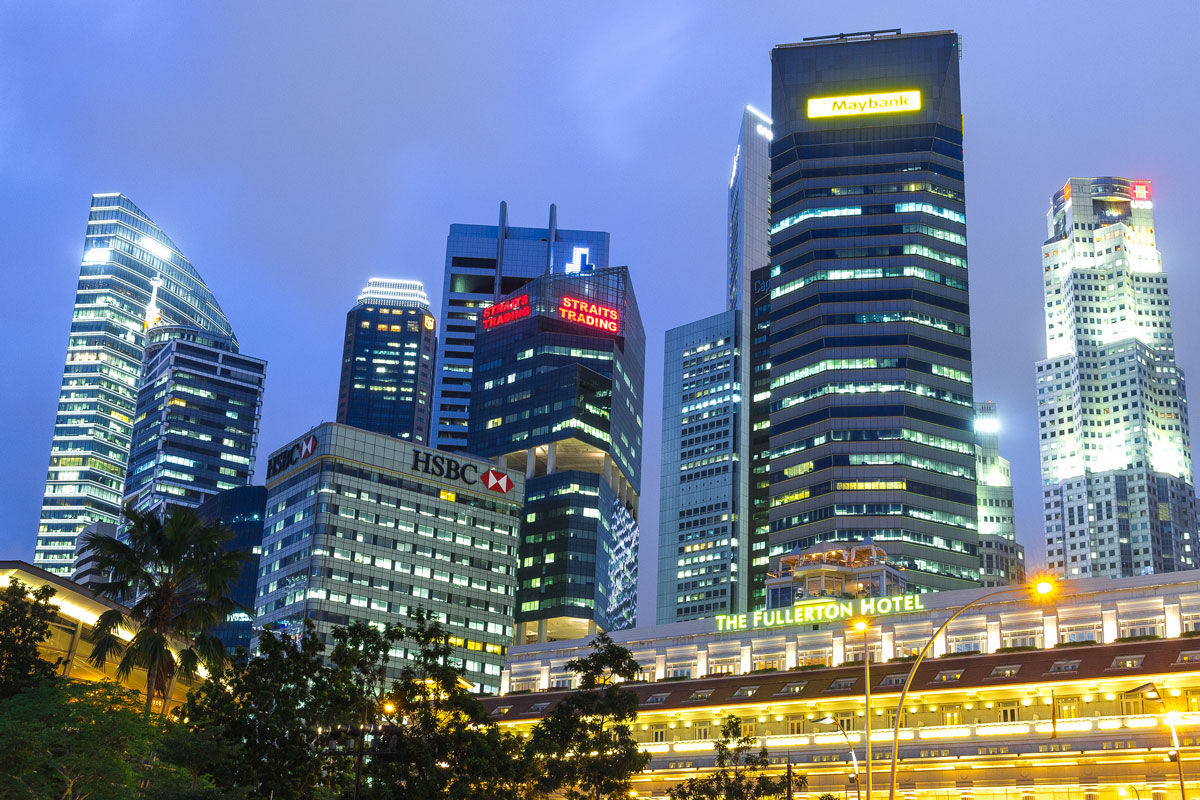
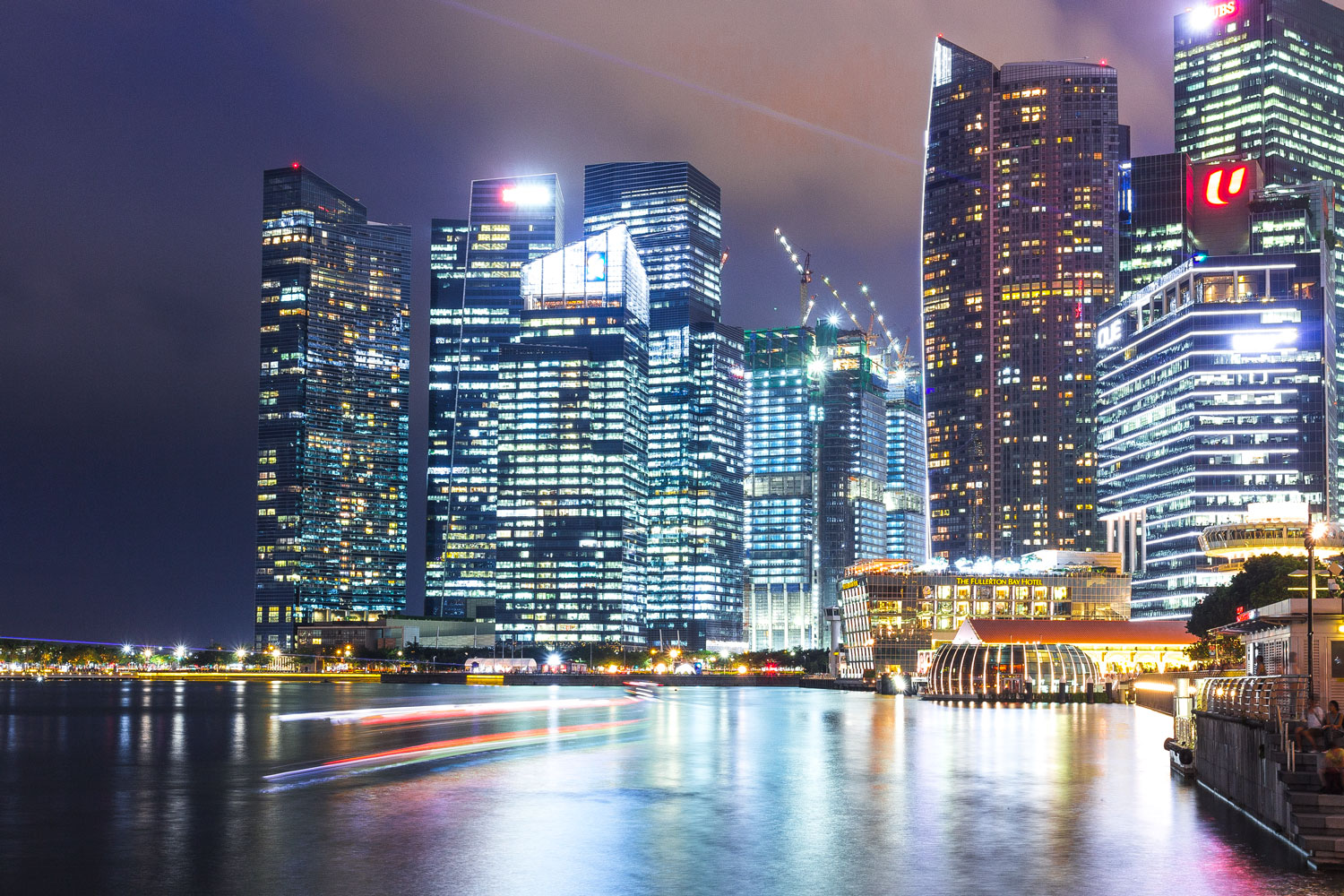

The Moon is rising.

At night, the hotel looks even more fantastic.
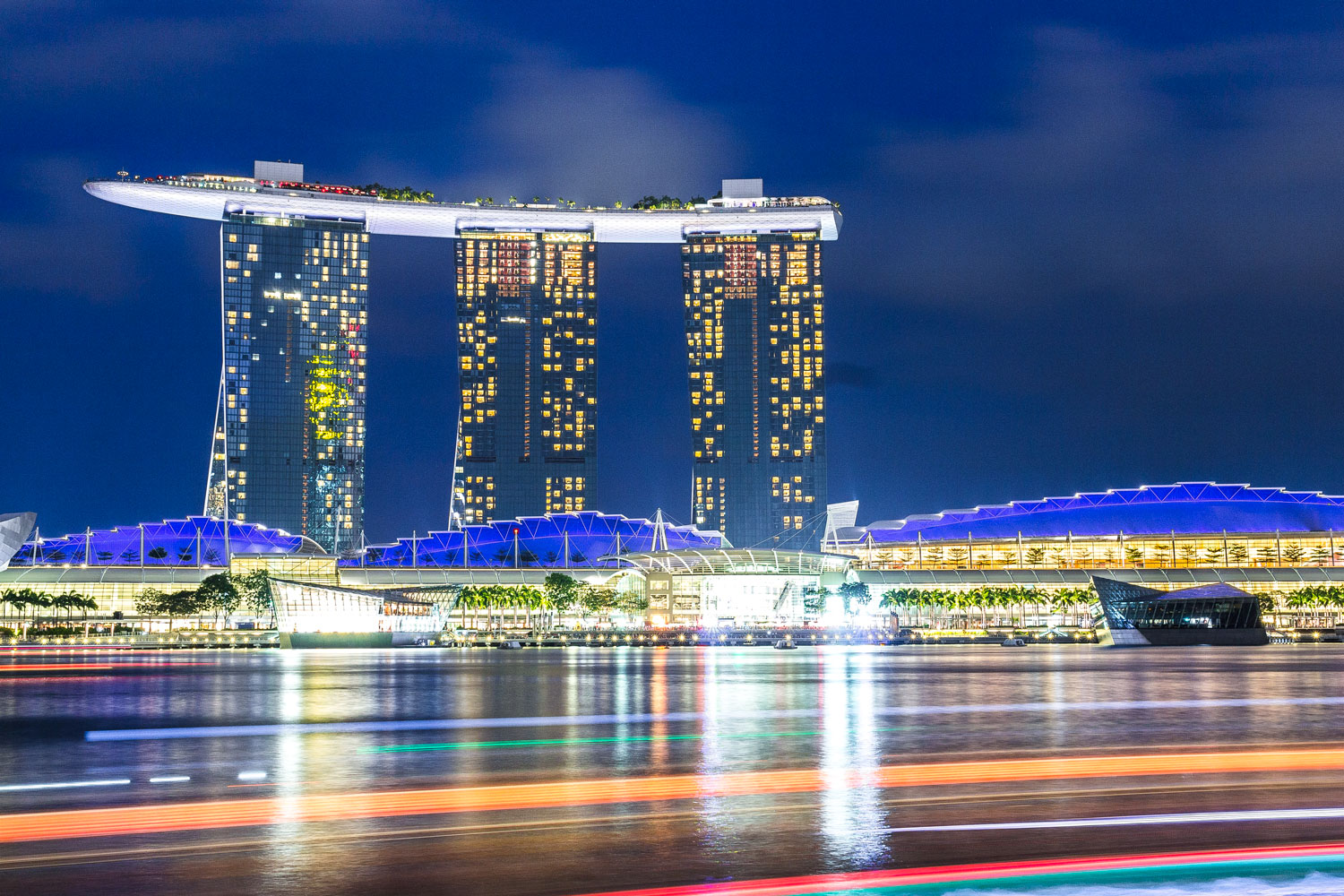
And then the laser show begins. It’s as big as the entire bay. Beams shoot directly from the ship, and the music can be heard all along the waterfront.



While the laser show is happening from the city side, holograms are projected onto the fountain sprays from the hotel side. At the same time, there is a performance in the park and at the opera. It’s impossible to experience all of Singapore’s attractions in one go! To see and enjoy the full spectrum of the grand open-air concert, you would need at least a week.
But even a week wouldn’t be enough because the shows constantly change, and Singapore keeps coming up with new and exciting entertainment. Without a doubt, one simply needs to live here to fully experience it all.
Living in Singapore, by the way, is expensive but not excessively so. In the “Marina” there are two and a half thousand rooms. Prices start at around $300 per night.
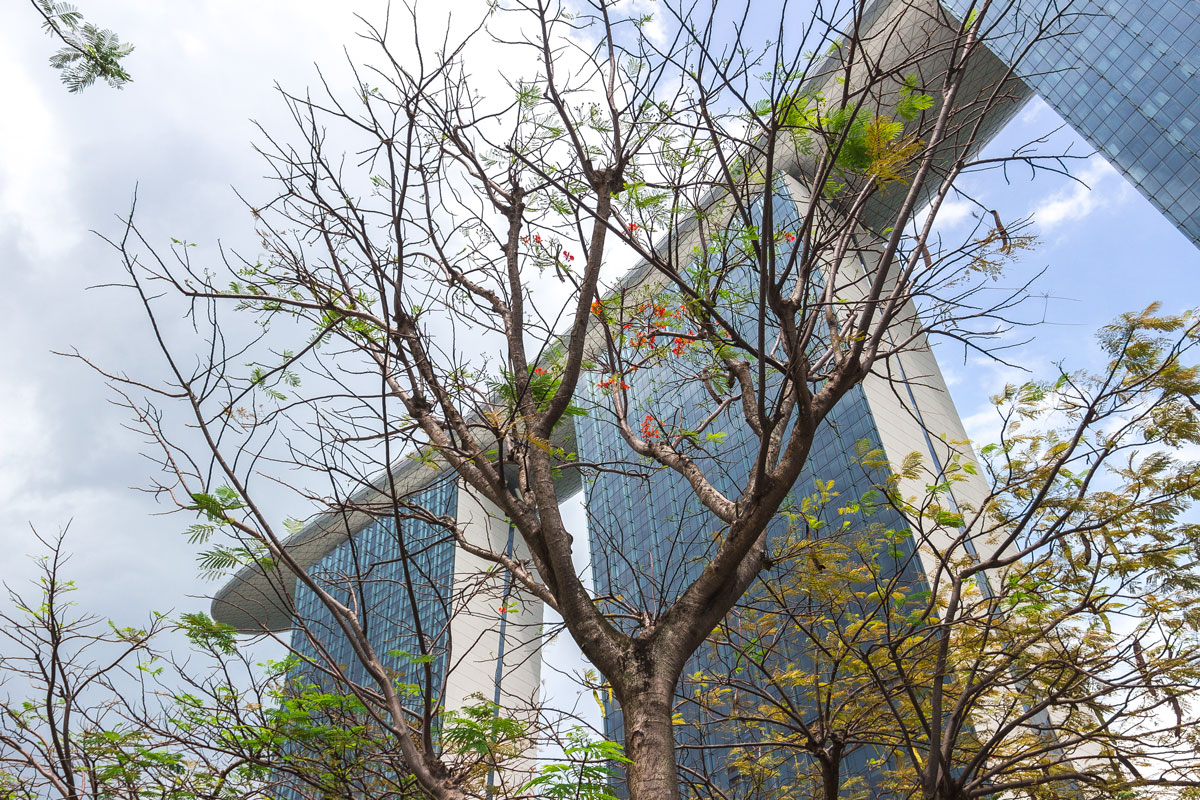
The hotel is combined with a huge mall, which is so elite and cool that an artificial river with gondolas even runs through the hall.
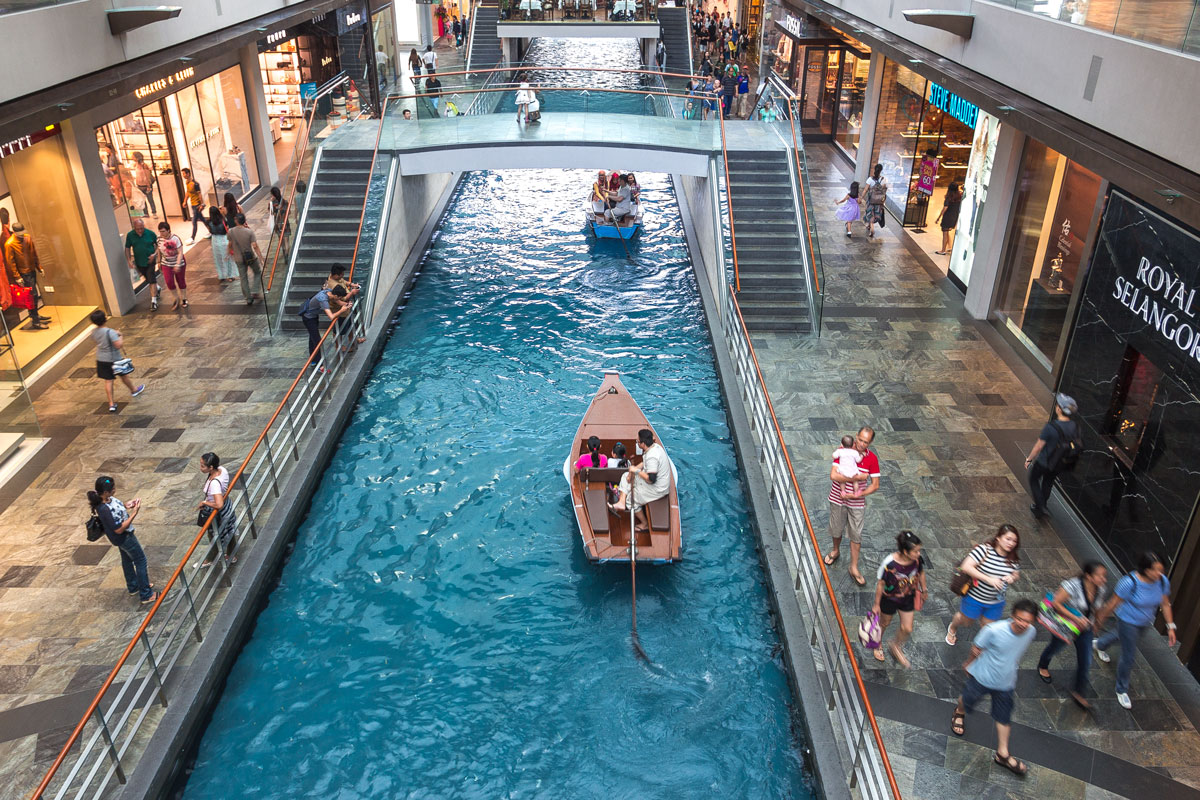
Utter luxury.
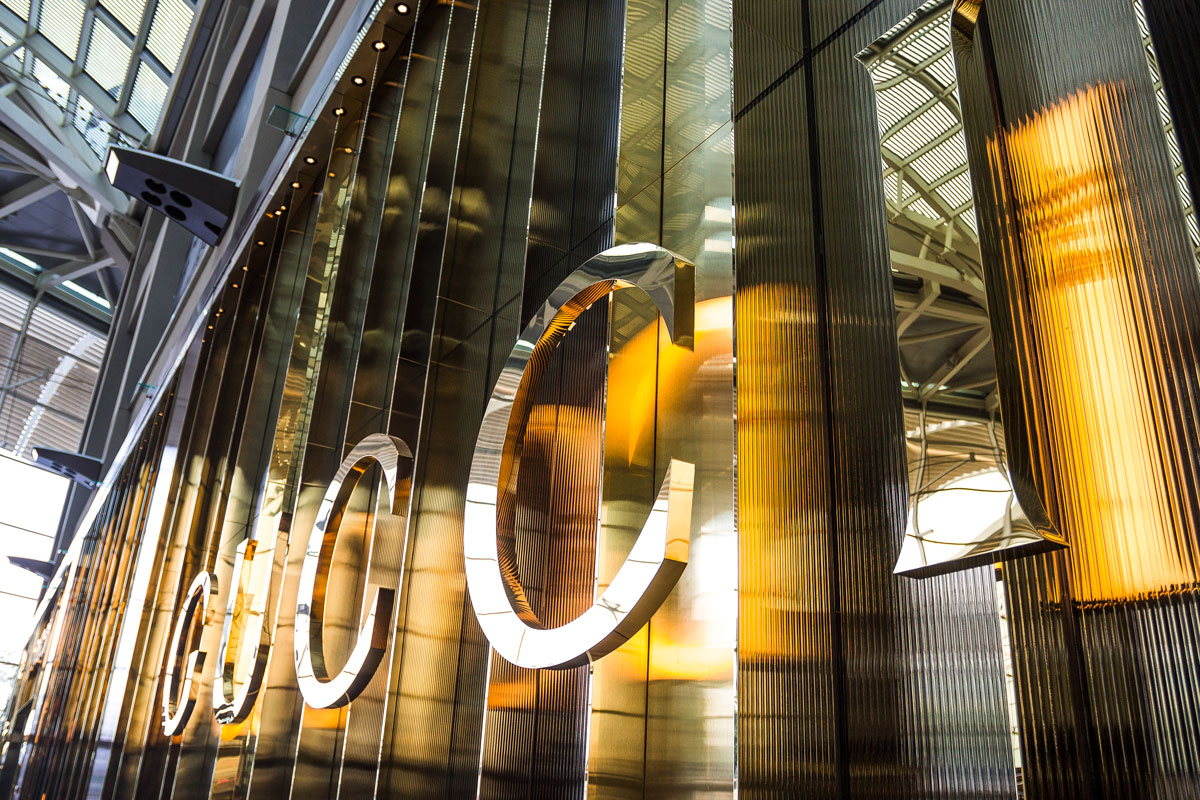
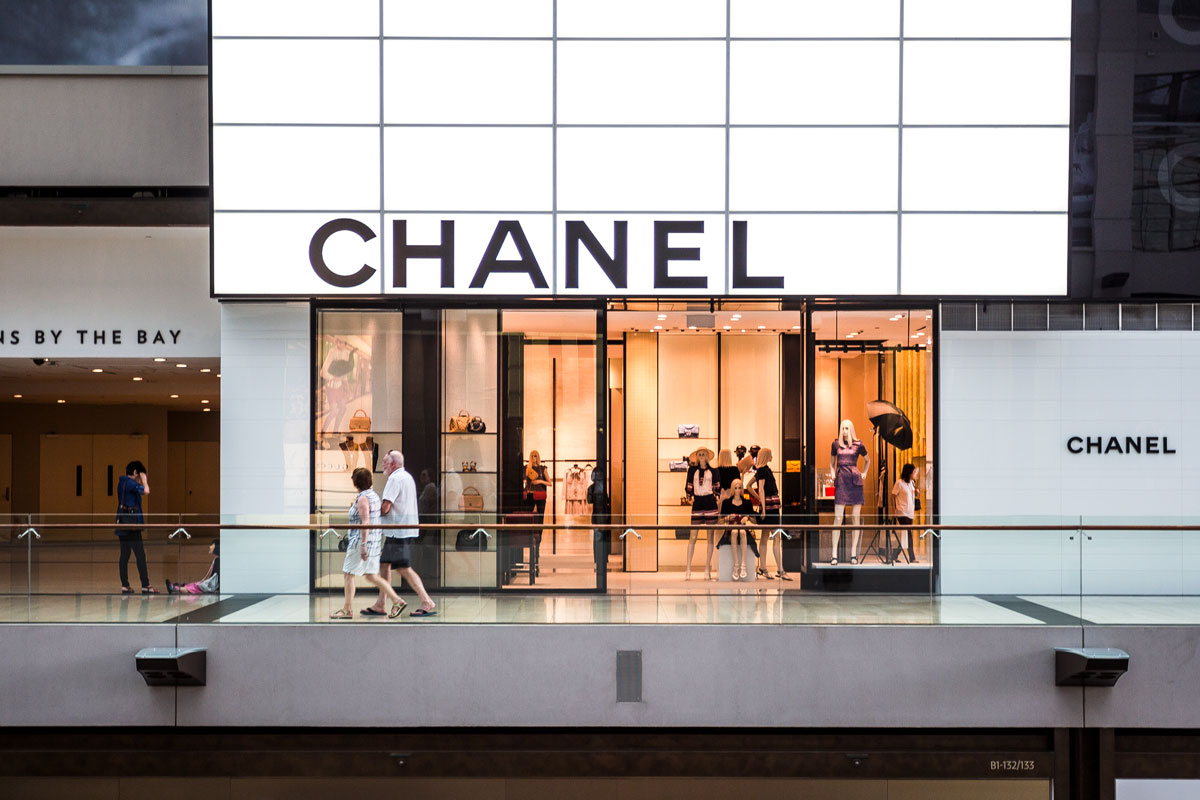
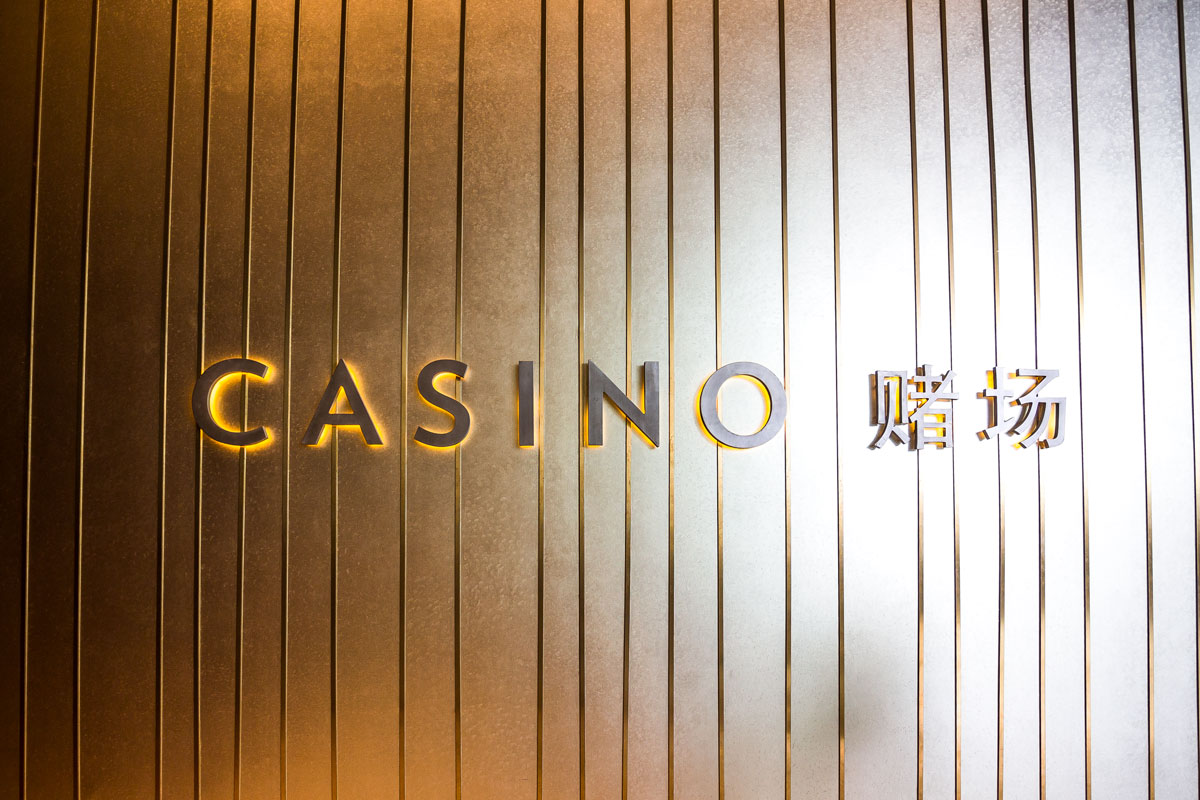
The pathway, starting from the waterfront, smoothly ascends to the rooftop of this mall, passes through a rooftop garden, and then seamlessly merges into the wall, traversing the skyscraper via a pedestrian bridge.
From this bridge, the interiors of the hotel are clearly visible. Below is an open space with cafes, shops, and a reception desk, while the room doors open directly into the “open space”!


The bridge passes through the hotel and emerges on the other side. There lies a mysterious forest of space trees.
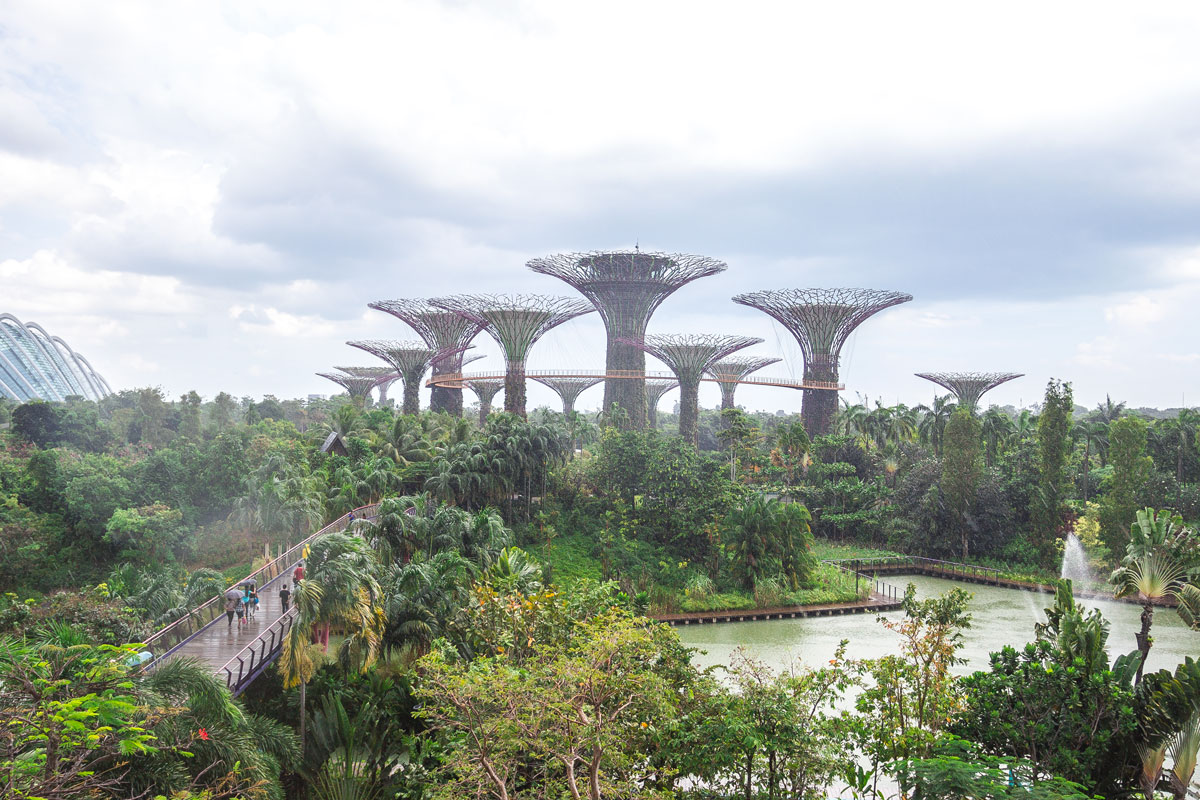
It is not impressive on a rainy day. It’s better to come here at night.
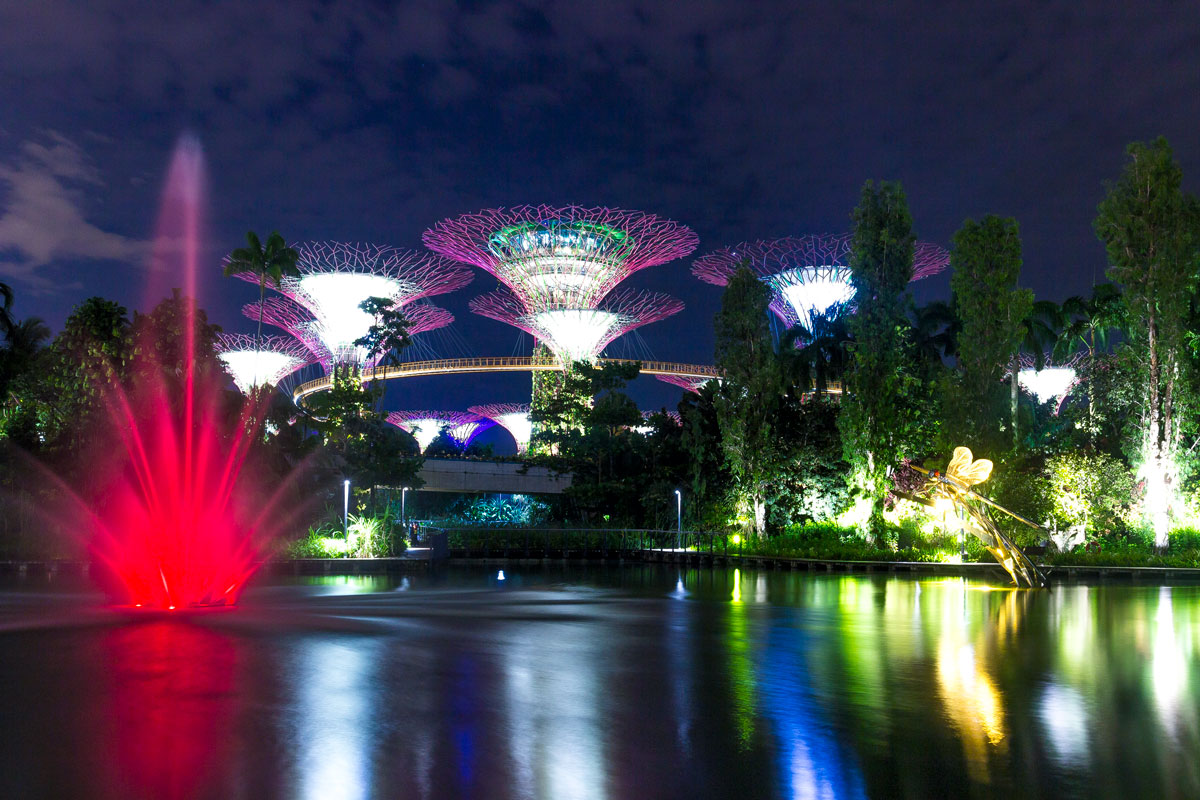
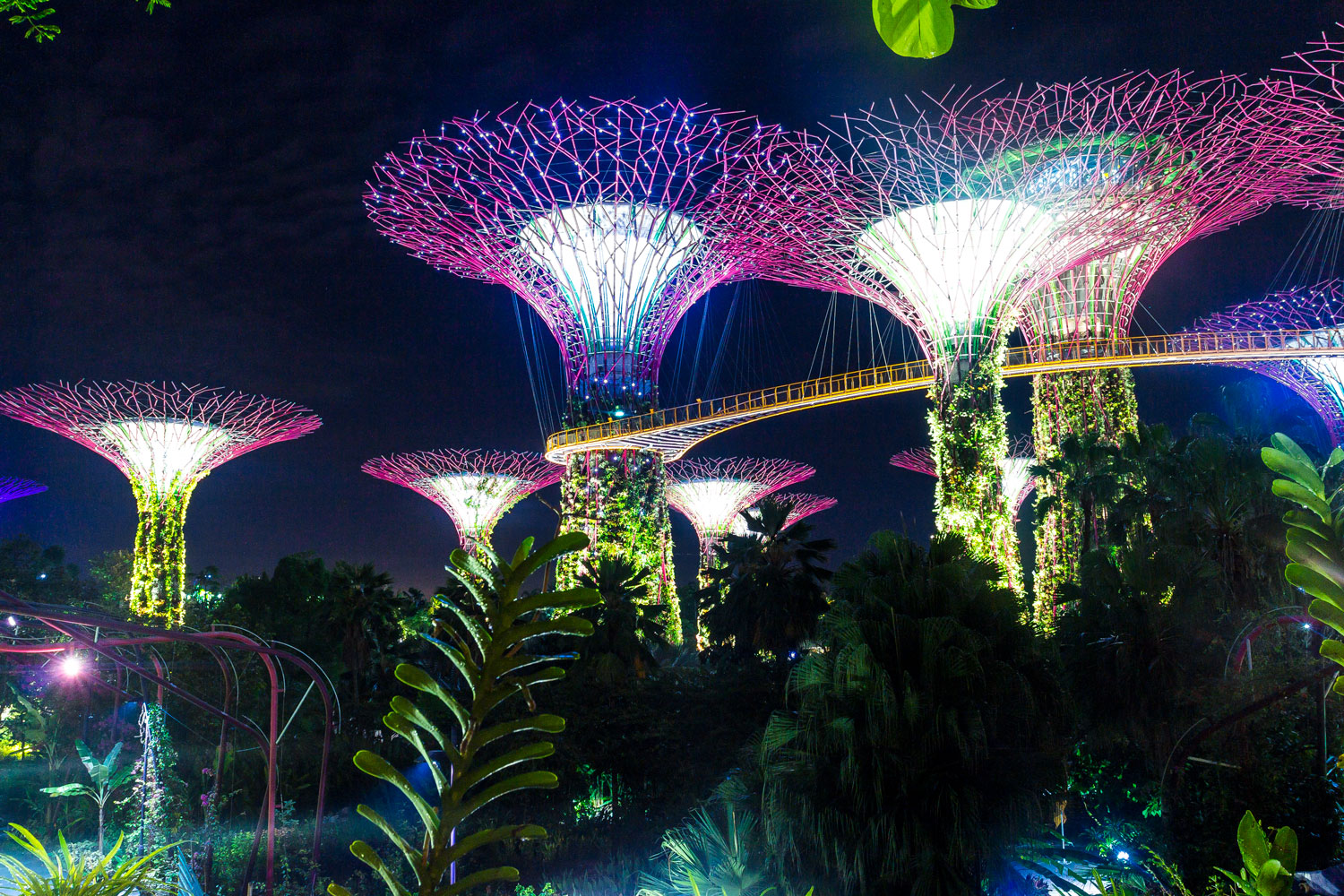
Fantastic.
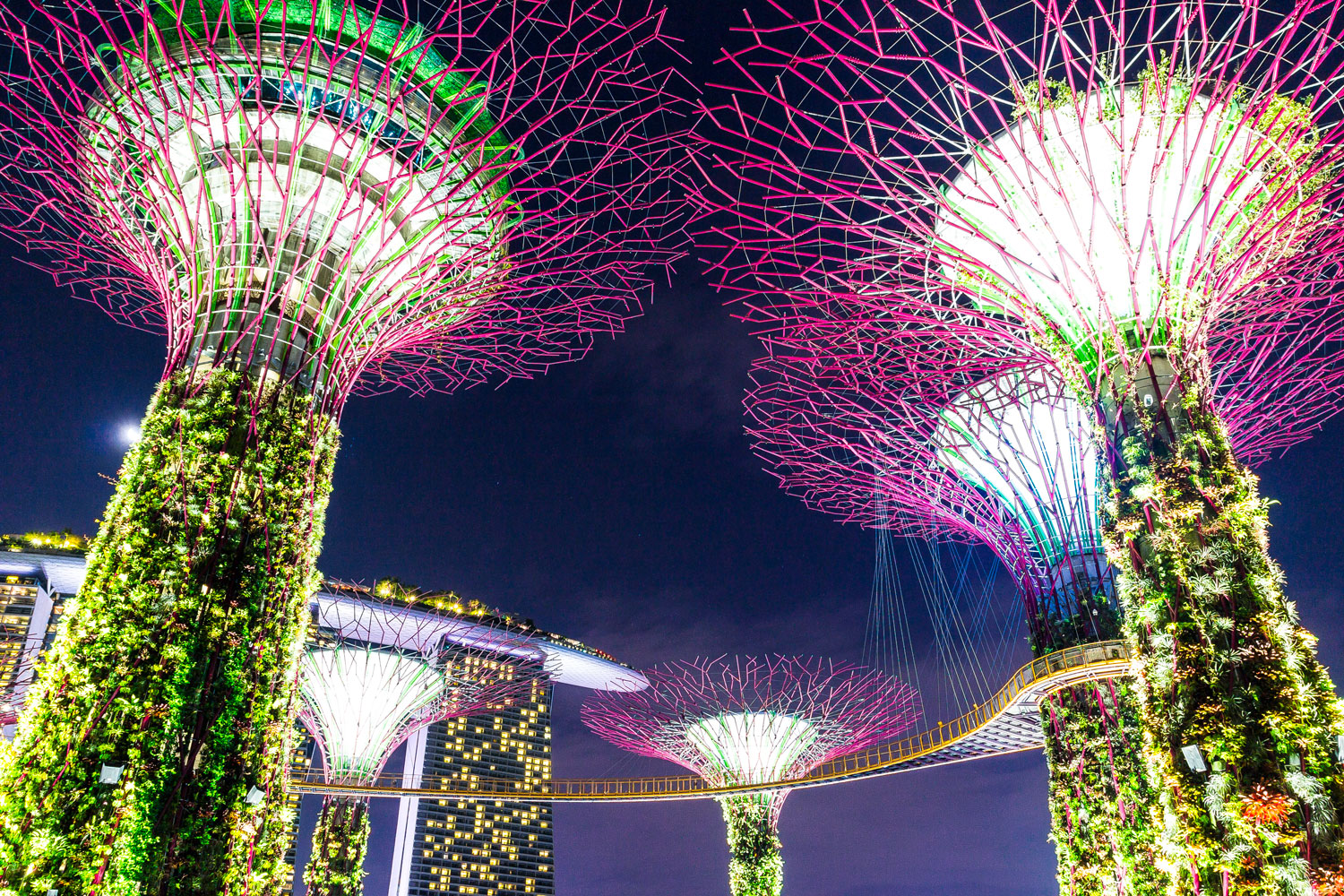

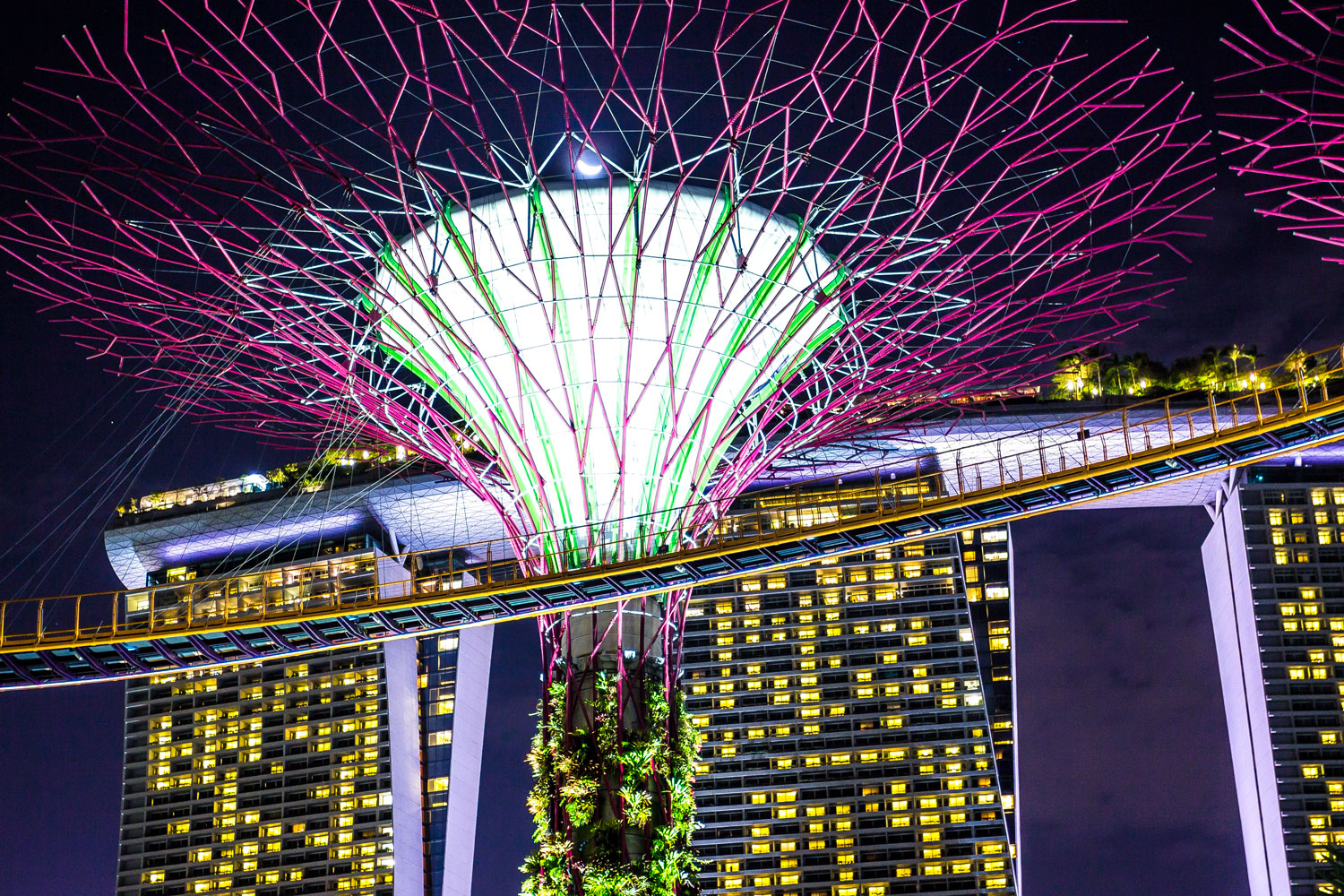
Every evening, the gardens light up with colorful flames, and the entire park is engulfed in a spectacular light show. The light show at Gardens by the Bay is a true extravaganza, a fantasy.
It is indescribable: to be in such a magical forest, surrounded by colossal glowing trees. Under normal circumstances, a significant amount of psychedelics would be needed to replicate this effect. However, Singapore offers all of this for free and without any harm to one’s health.
This is “Gardens by the Bay” — the main attraction of Singapore. Just ten years ago, this place didn’t exist at all; there was ocean water here. The park’s territory was artificially created by reclaiming and expanding the coastal area with land.
Gardens by the Bay became the first item in Singapore’s new program. They no longer want to develop the morally outdated “Garden City.” Their new strategy is the “City within Gardens.”
These supertrees are not just a beautiful attraction. They are fantastically designed ecosystems. In total, there are 18 trees in the park ranging from 25 to 50 meters in height. At the tree’s crowns, there are solar panels and reservoirs for collecting rainwater.
The supertrees obtain energy through various means. Solar panels alone won’t take you far, so the trees collect rainwater that falls within their trunks and use it to power a turbine generator. A supertree is like a small hydroelectric power station.
The collected water and electricity are directed to the adjacent conservatory for plant irrigation and lighting. Excess water is pumped back to the tree for technical purposes and watering the tree crowns.
In addition to that, the trees use a pump to extract warm, moist air from their heated crowns and send it to a dehumidifier. The dehumidified air is also directed to the conservatory for humidity regulation, while the remnants are pumped and released back into the atmosphere through another tree.
The cherry on top: as the air rises up the trunk, the exhausted air creates a draft near the ground, resulting in a gentle breeze and coolness beneath the trees.
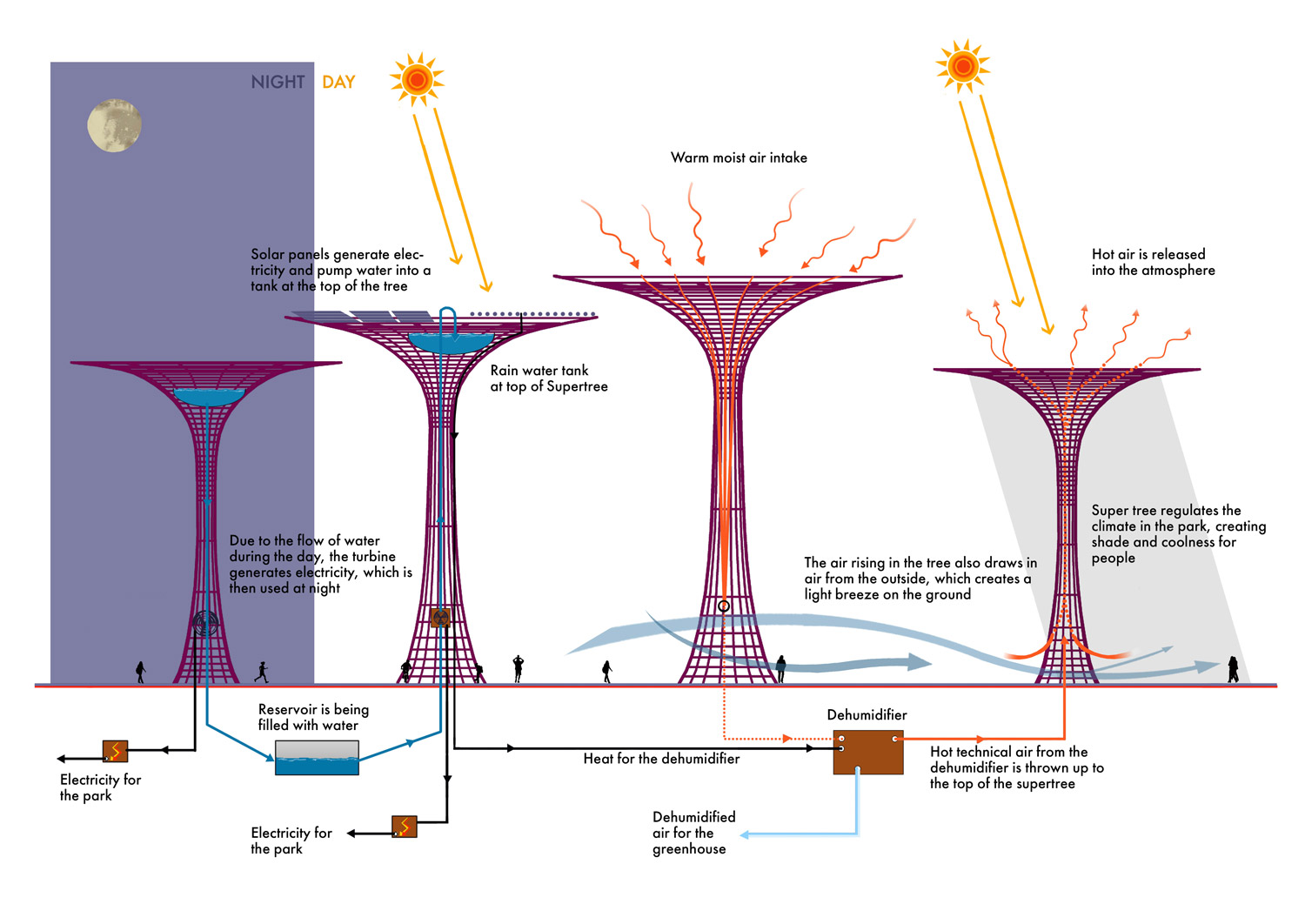
There are many technological marvels like this in Singapore. Here is a massive funnel near the hotel. On sunny days, it’s hard to understand its purpose.
It is worth visiting the funnel during the rain. Rainfall in Singapore occurs nearly every day, precisely from 5 to 7 in the evening. This tiny island, bordered by equatorial seas, is influenced by unique atmospheric cycles and monsoons from the direction of the island of Sumatra. As a result, almost every sunny morning smoothly transitions to clouds closer to noon, followed by a two-hour downpour with thunderstorms, and within about half an hour, the sky clears up again.
What would they do with such weather in Russia? We would be flooded with streams of water. In the best case, they would create a storm sewer system. But what did they do in Singapore? The water flows from the mall roof into a giant funnel with a displaced drain relative to the center. It creates a free whirlpool!
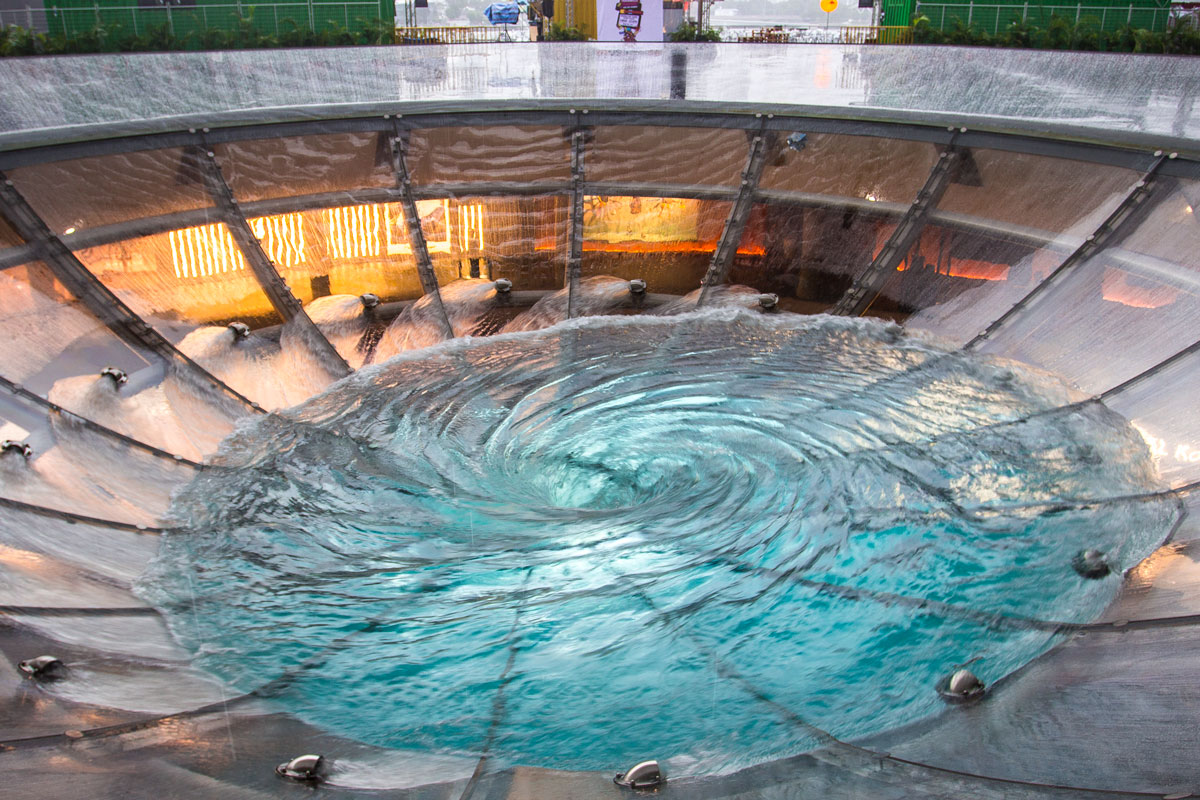
Where does the water from this funnel go? Well, it’s something else entirely. Remember the river with gondoliers? The water stream falls from a height of three floors right in the middle of the mall and replenishes this artificial river!
Park from above. Trees on the right. Two glowing shells on the left — greenhouses with an immense collection of plants from around the world, for which the trees work.
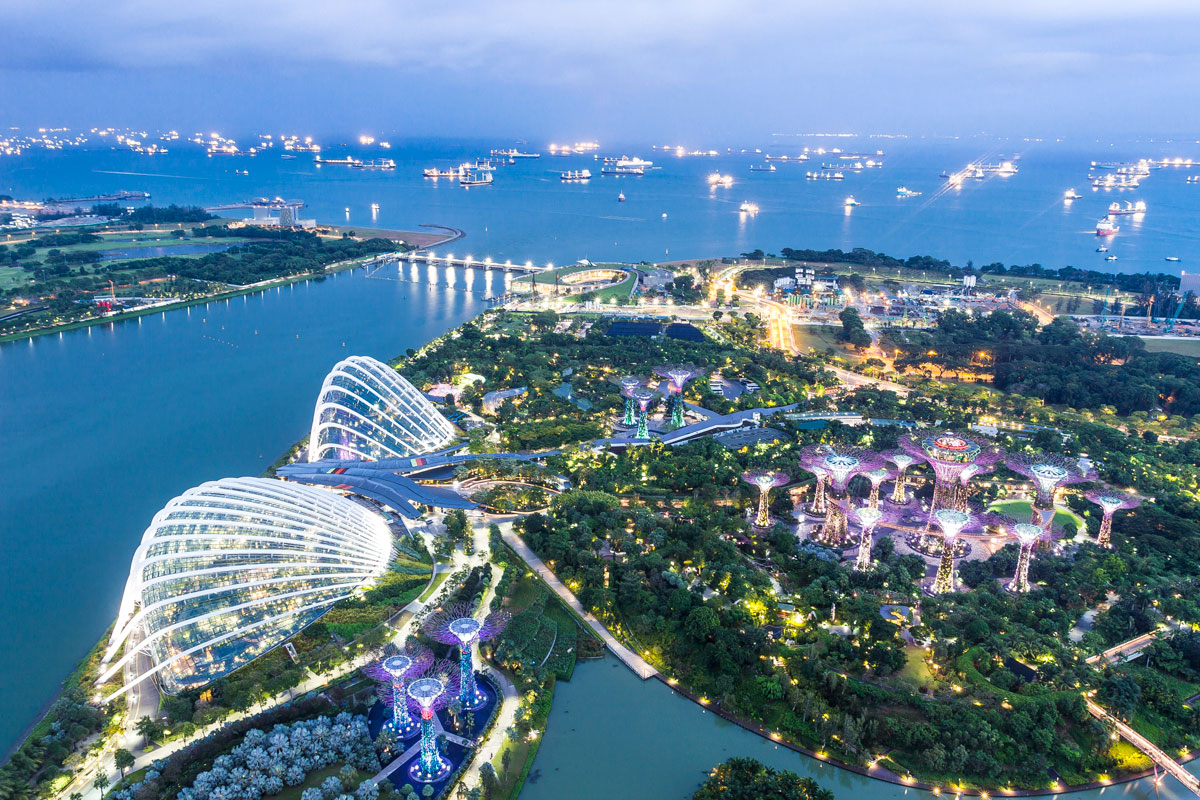
This is how the residents of Marina Bay Hotel see the park. They also see streams of ships entering the Singapore port from their windows.
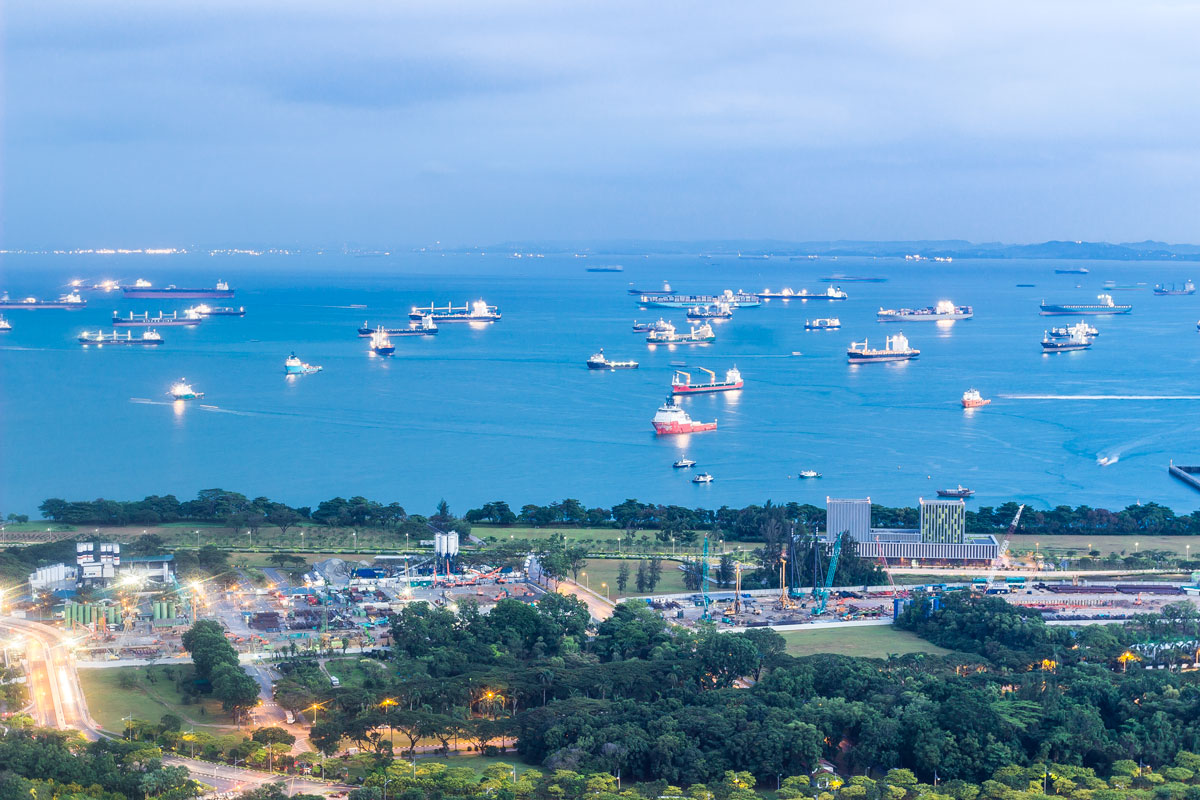
They also see the golden veins of the distant, free Singapore highways, with a giant, shimmering Ferris wheel.

Those who got a room on the other side of the hotel see a beautiful bay with a handful of skyscrapers on the shore.
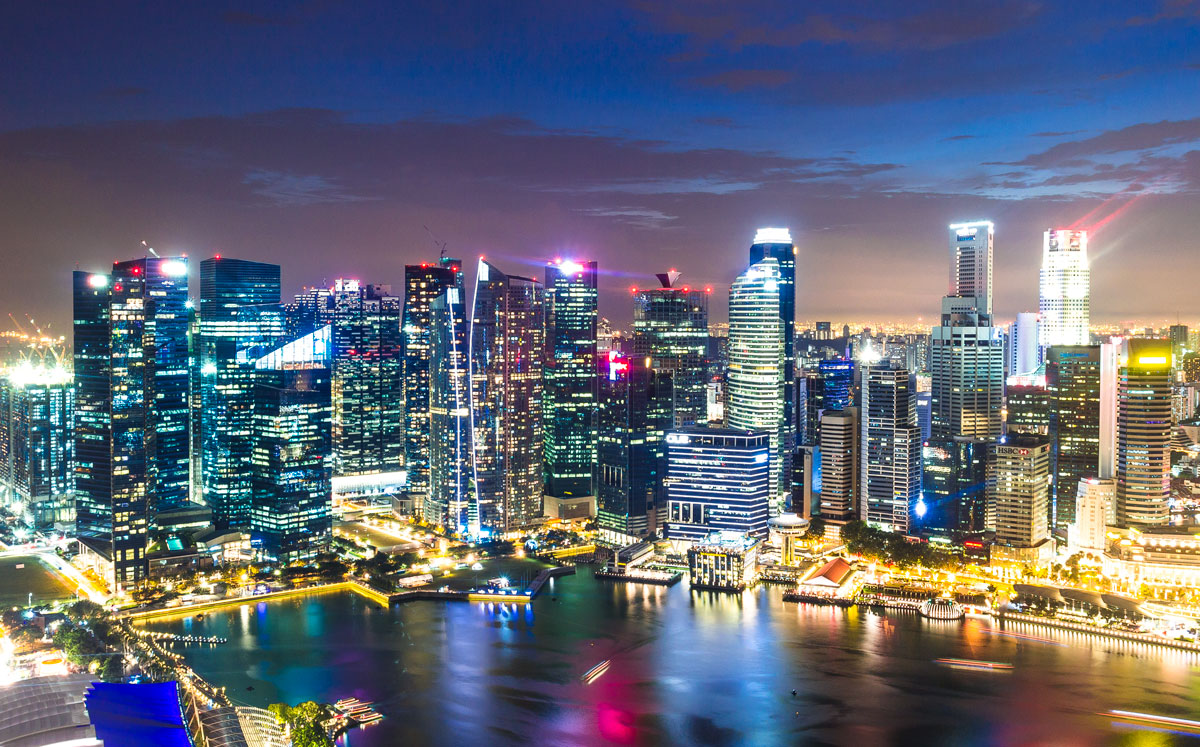
Well, for us, all that’s left is to look from the park at the enigmatic ship-shaped hotel.

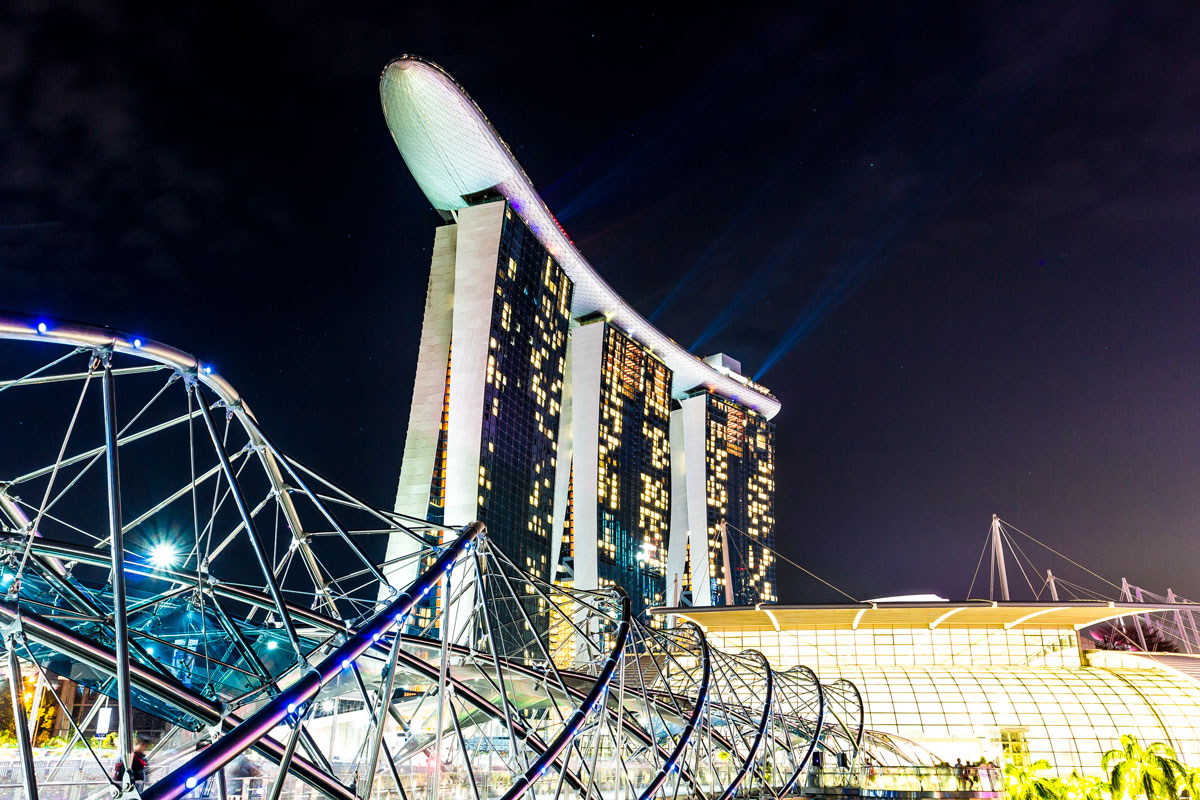
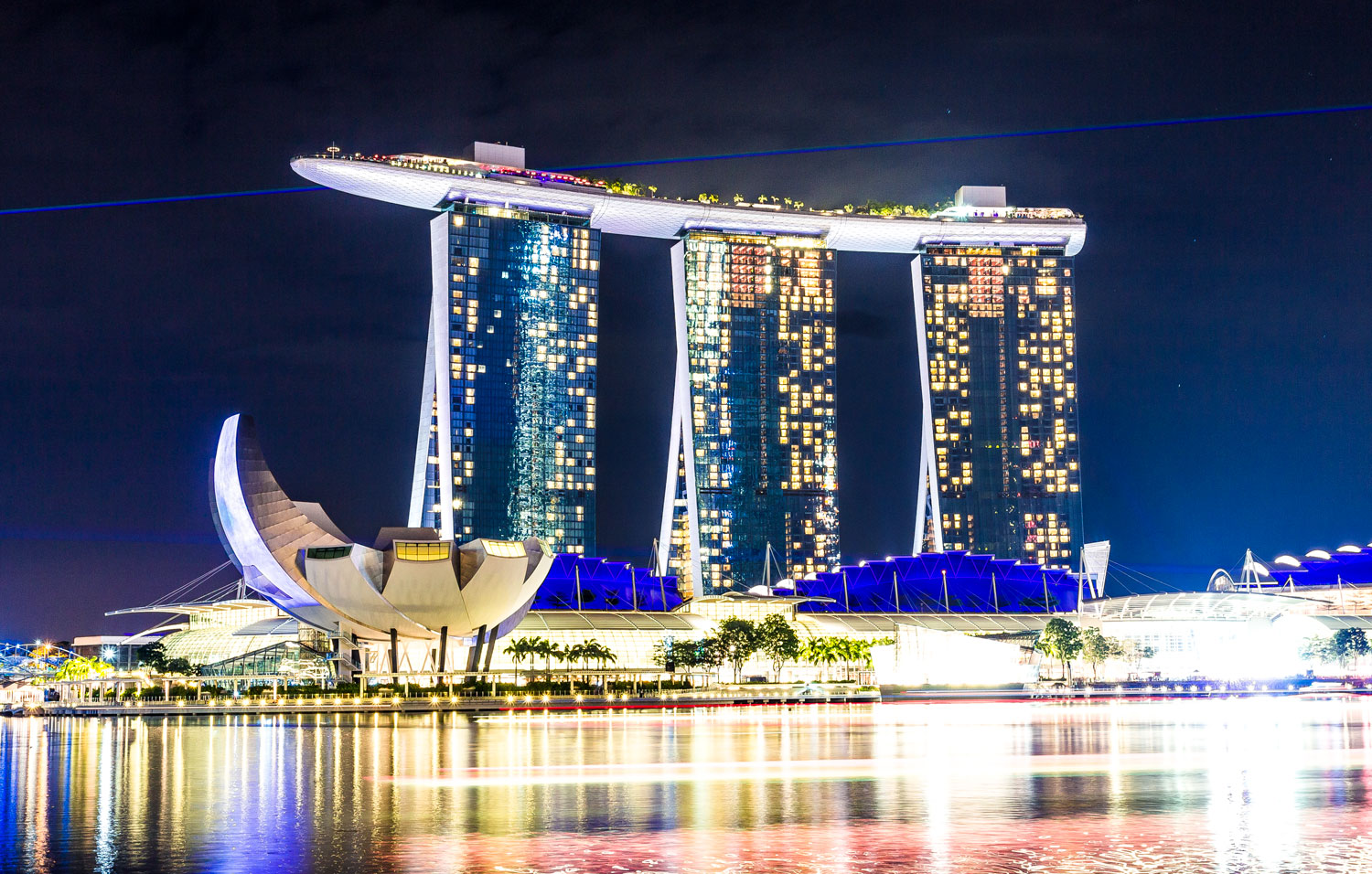
To watch the Ferris wheel from the waterfront.
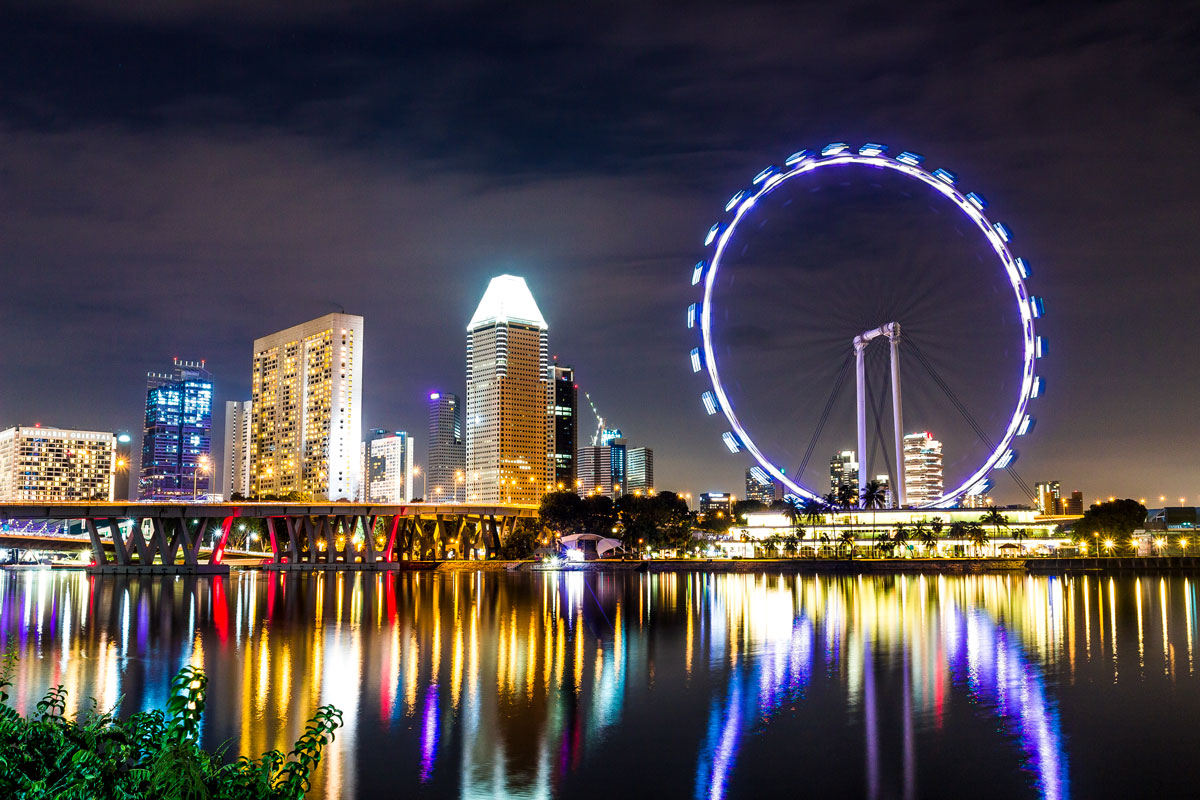
To look from the observation deck at the opera house building shaped like a pungent durian fruit.

To look and think: “Damn, Singapore is freaking awesome.”
